American Civil War Photos That Put Things Into Perspective
The American Civil War lasted four years, from 1861 to 1865, and was a brutal conflict that threatened to tear the country apart. While the Union ultimately prevailed over the Confederacy, the lasting impact of the conflict would be felt for generations to come.
The Civil War was also noteworthy for being one of the first wars that was extensively documented through photography, which gave the general public a new perception of not just battlefield brutality, but also day to day life of the soldiers tasked with fighting.
Lincoln played a central role.
![Abraham Lincoln at [redacted] During Civil War](https://media.tellmebest.com/wp-content/uploads/2023/09/abraham-lincoln-at-antietam-during-civil-war-30116.jpeg)
By the time hostilities broke out in the Civil War, Abraham Lincoln — the 16th president of the United States — was already a household name. However, his leadership during the conflict helped him cement his legacy.
Lincoln was committed to preserving the Union and was also famous for issuing the Emancipation Proclamation in 1862, which declared enslaved people in Confederate states to be free.
Enslaved people made a bid for freedom.

While the Civil War would ultimately result in a victory for the Union and the end of slavery in the United States, this was hardly a foregone conclusion — and as such, there were no guarantees during the conflict that slavery would ever be abolished.
This Civil War-era photo shows a group of formerly enslaved people who’ve made their way north to gather at a wharf. Rather than waiting for the conflict to end, they opted to escape the South.
Training was critical.
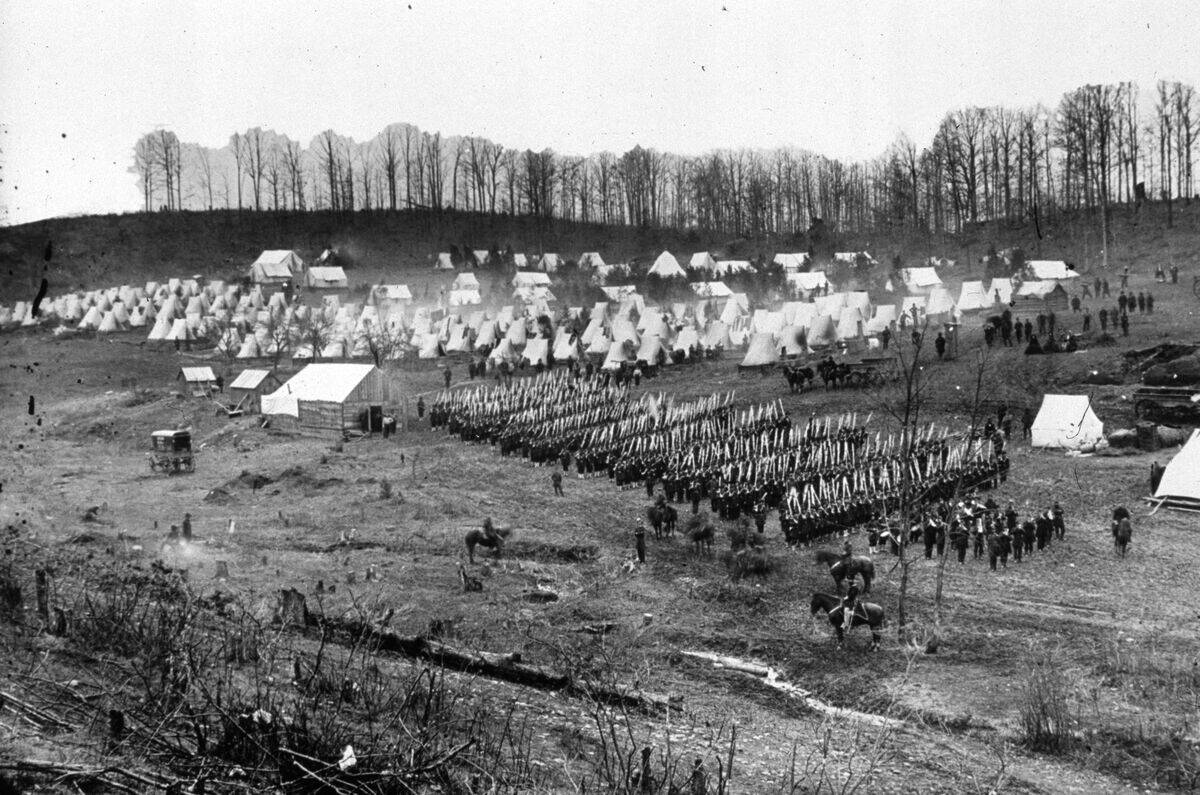
With few soldiers experienced in wartime tactics, it was increasingly important to deliver at least some form of training to troops before they were deployed.
This image shows members of the Union Army’s 96th Pennsylvanian Regiment as they carried out drills at Camp Northumberland, not far from Washington.
Many soldiers were Black.
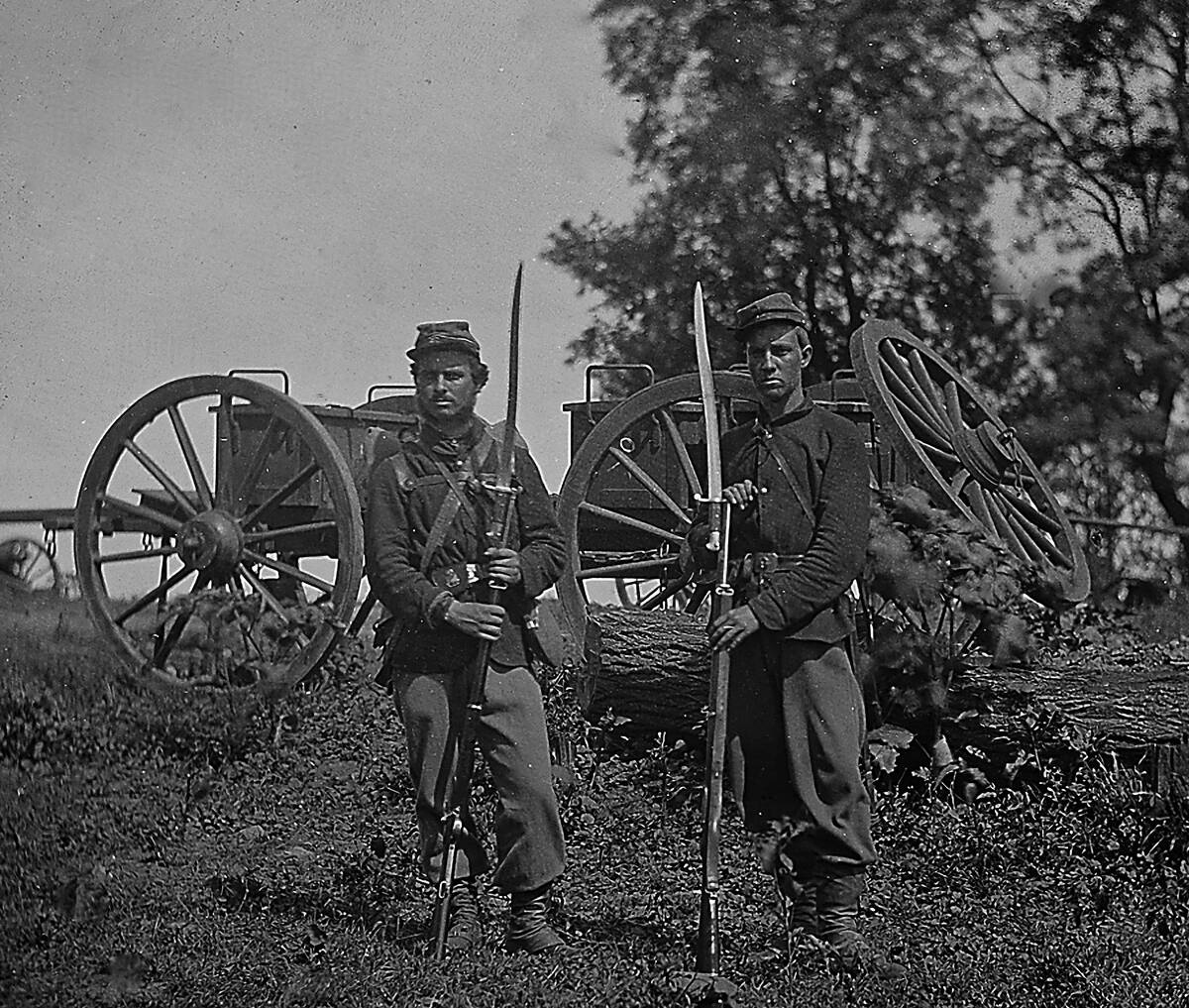
Millions of men took part in the battles of the Civil War, with Black soldiers playing a critical role in the Union’s ultimate victory.
While the segregated Black units generally faced lower pay and harsher conditions, their presence helped to bolster the Union’s manpower at a time when the North desperately needed it.
Formerly enslaved men fought for the Union.
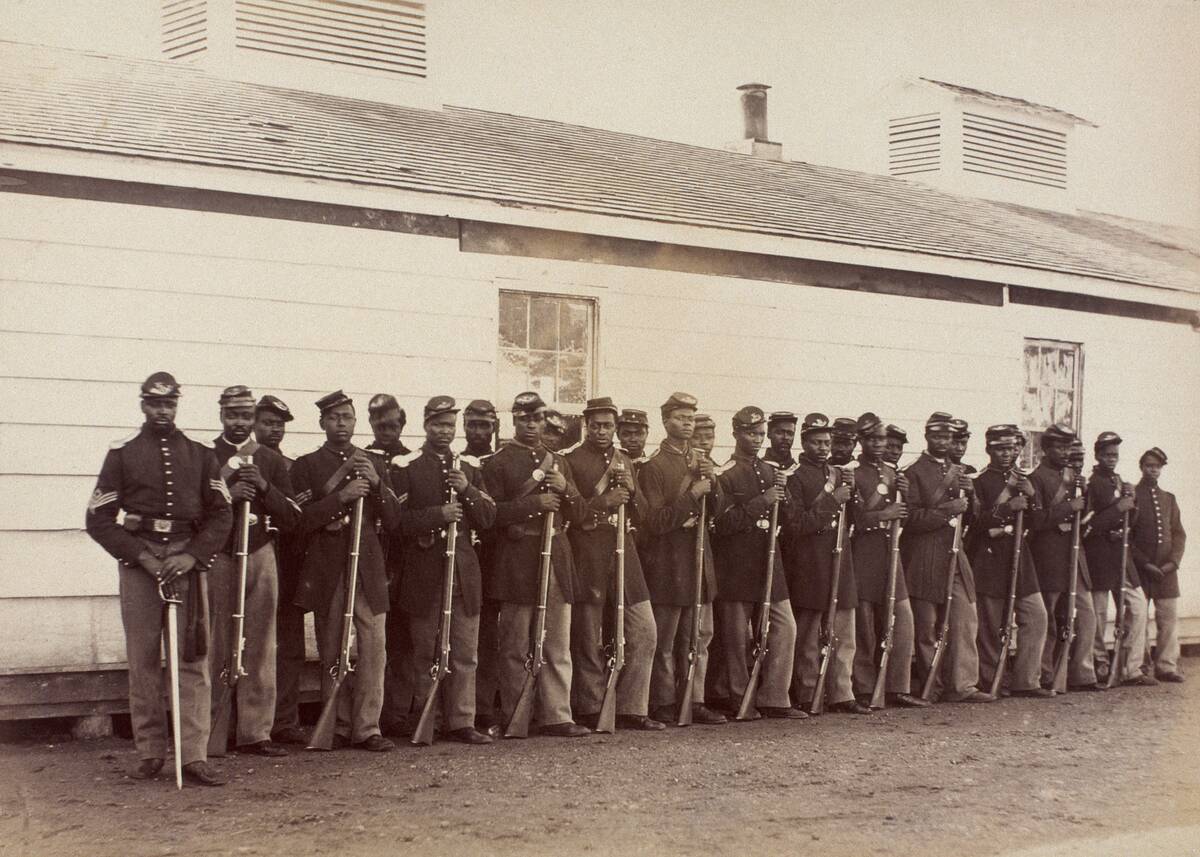
Regiments like the 4th United States Colored Troops (USCT) were formed after the Emancipation Proclamation, which paved the way for Black men to enlist in the Union Army.
These regiments, though segregated, fought bravely on behalf of the Union. The 4th USCT was composed of free volunteers and formerly enslaved men.
Zouave units had a distinctive look.
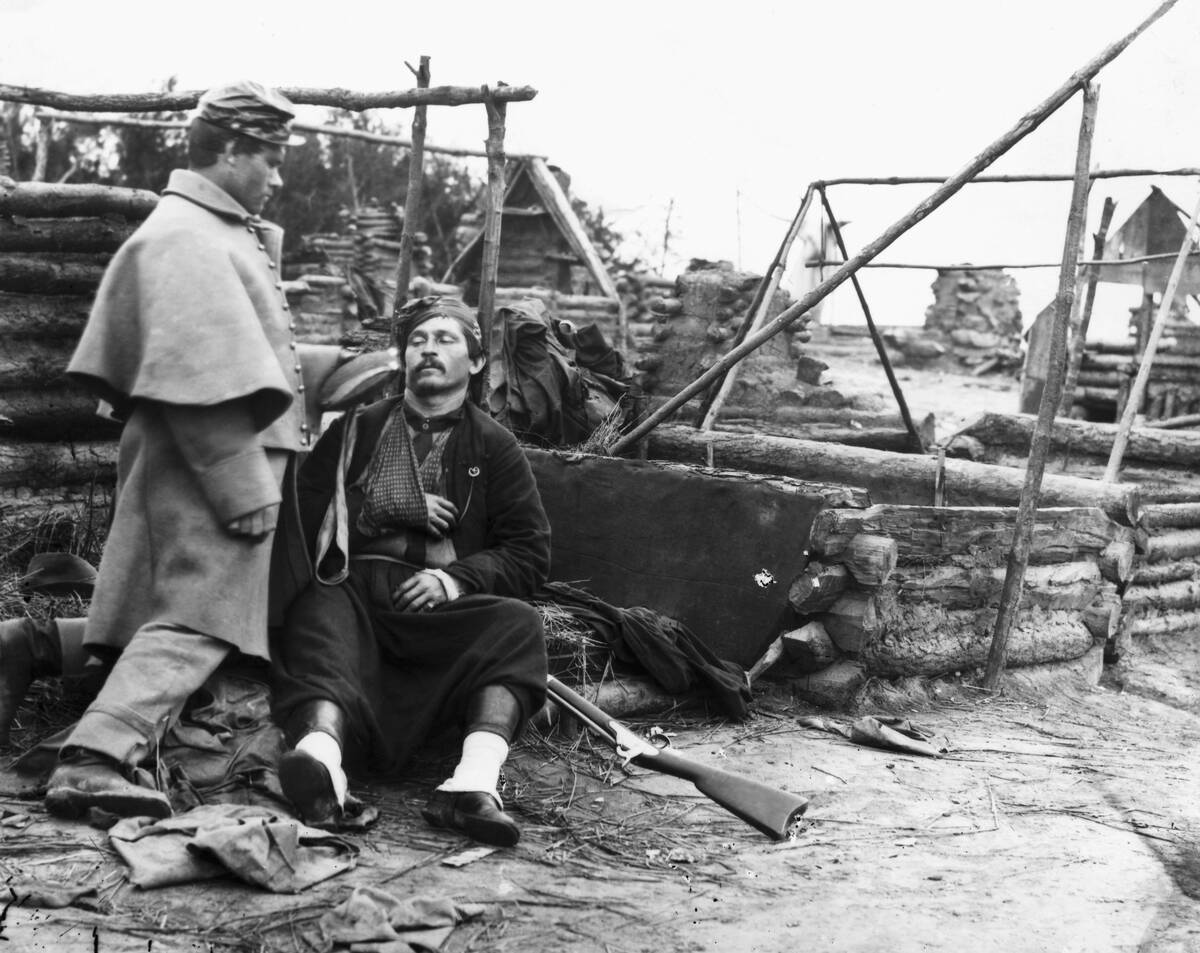
The man on the right is a member of a Confederate Zouave unit, as evidenced by his unique and colorful uniform. Zouave units were modeled after French colonial troops, and had a presence on both sides of the Civil War.
The effectiveness of these Zouave units could vary considerably, but they were generally admired for their precise training, discipline, and overall flair.
Many field hospitals were makeshift affairs.
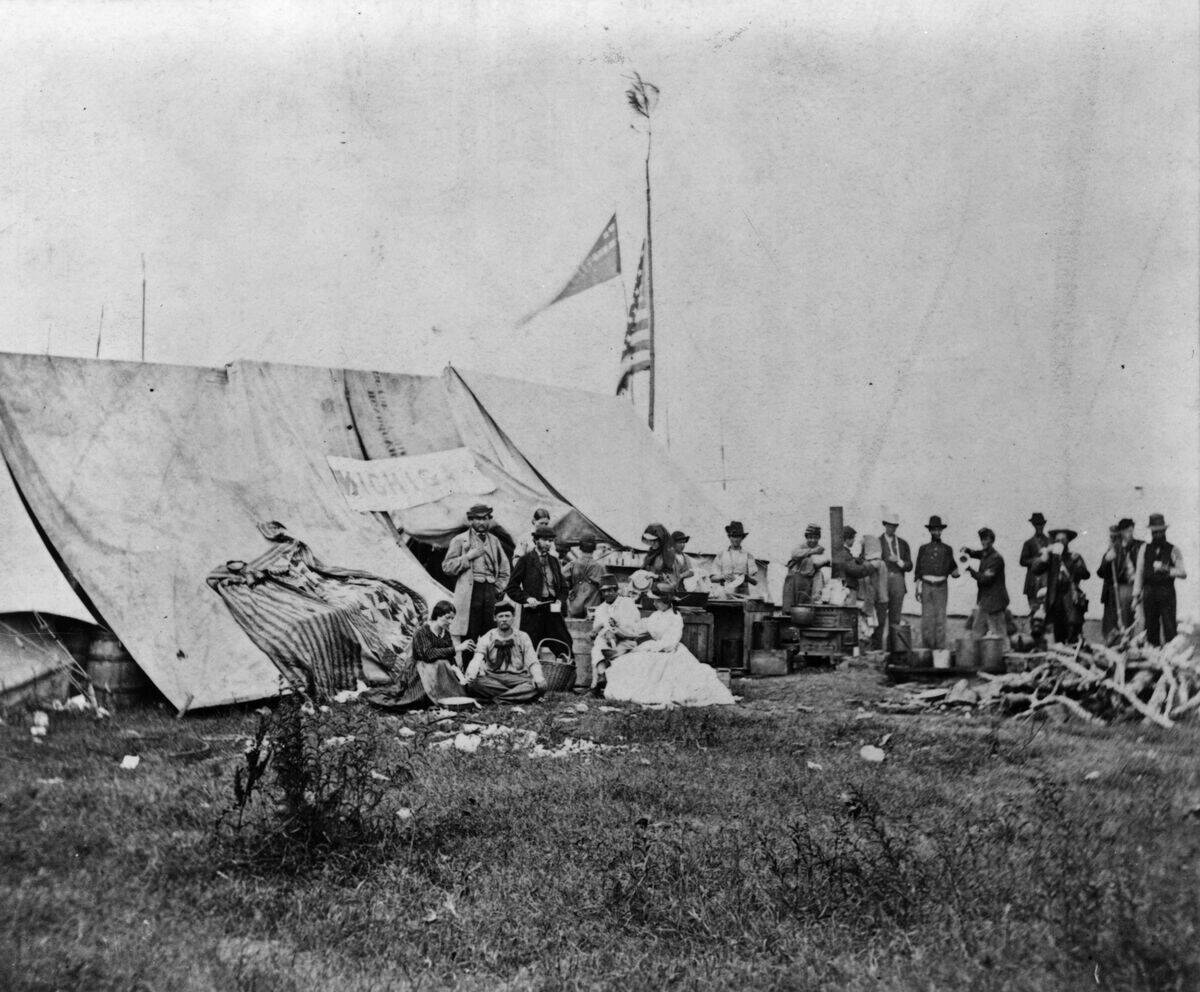
This image shows a rare moment of calm outside of a Union field hospital that was set up by nurses from the Michigan Soldiers’ Relief Society.
While a tent set up in a field was a step up from battlefield surgeons, the interiors of these makeshift field hospitals grew increasingly bloody and chaotic as battles raged on.
Artillery played a massive role.

In the 1860s, most battlefield technological advancements seemed to revolve around building bigger and more destructive guns.
This piece of Union artillery was delivered to troops to help with the fighting in Murfreesboro, Tennessee. Big artillery like this was useful not just for bombarding fortress walls, but also for delivering destruction from a long way away.
Many states got involved.
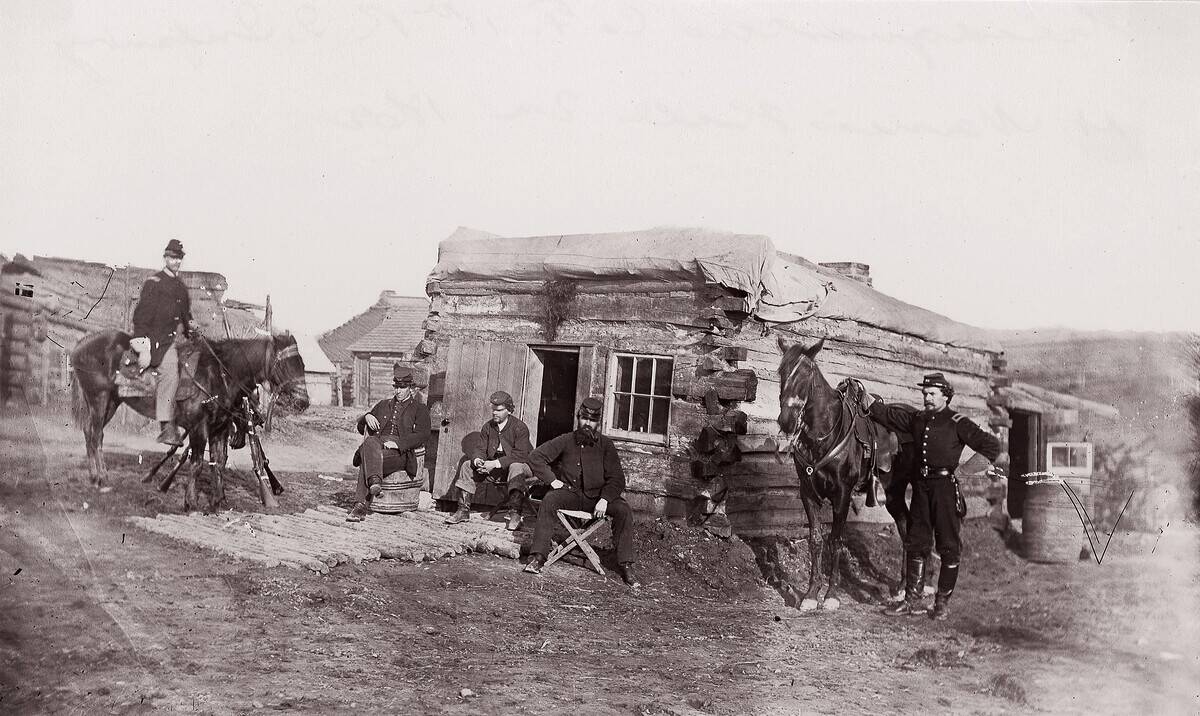
Rhode Island is a state that was far removed from the battlefields of the Civil War, but this small state nonetheless provided volunteers to assist with the Union war effort.
The 11th Rhode Island Infantry Regiment, seen here in Miner’s Hill, Virginia, was a short-lived regiment that saw limited direct conflict but still served a crucial role in contributing to logistical support.
Enslaved people had a difficult route to freedom.
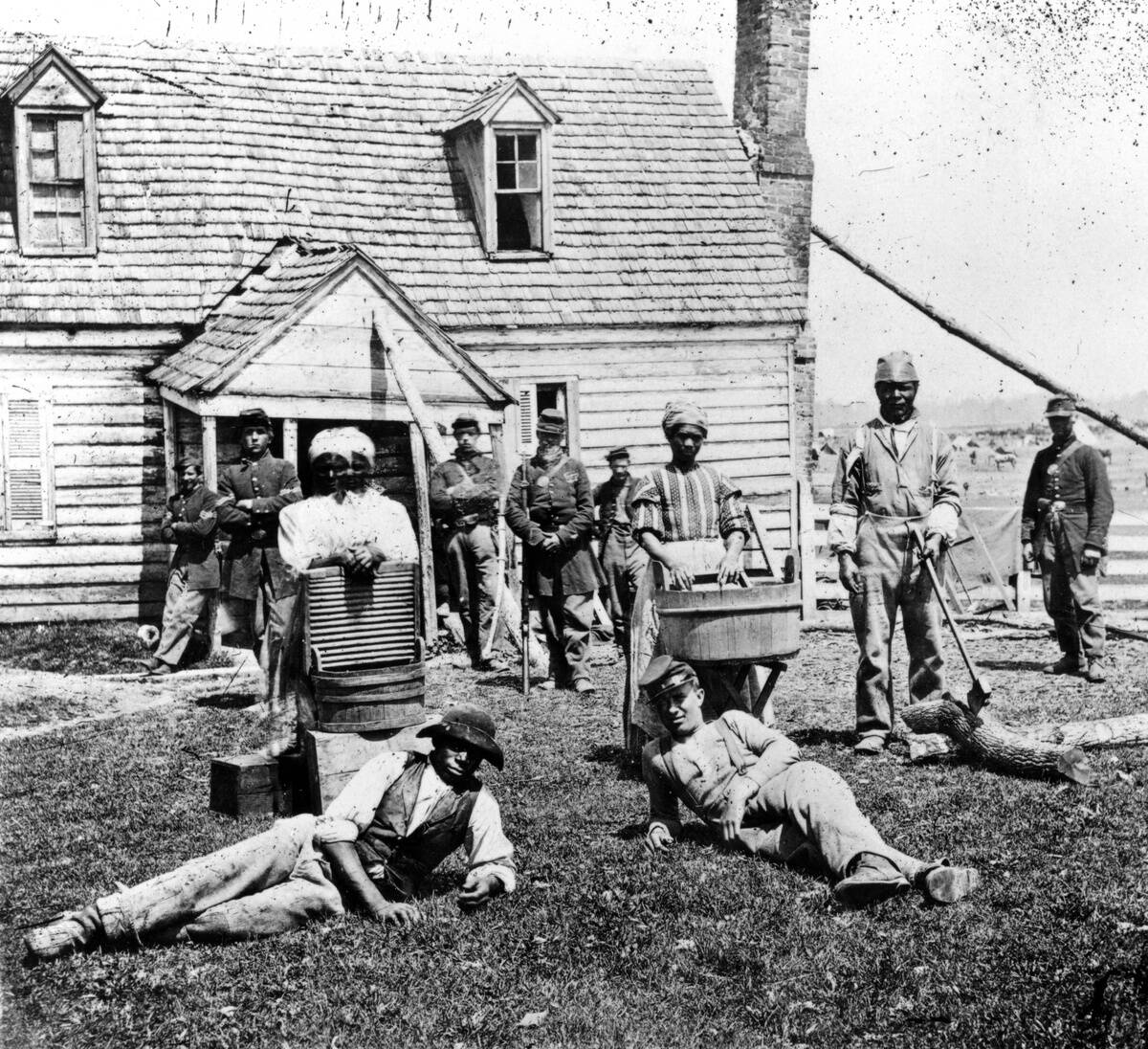
Paranoia about revolts and uprisings among enslaved people reached a fever pitch in the years immediately before the Civil War, which meant that these marginalized people faced major challenges in their path to freedom.
While it was true that networks like the Underground Railroad could help them gain passage to a free state, the presence of authorities and slave-catchers in Southern states made this a treacherous endeavour.
Conditions for wounded soldiers could be grim.
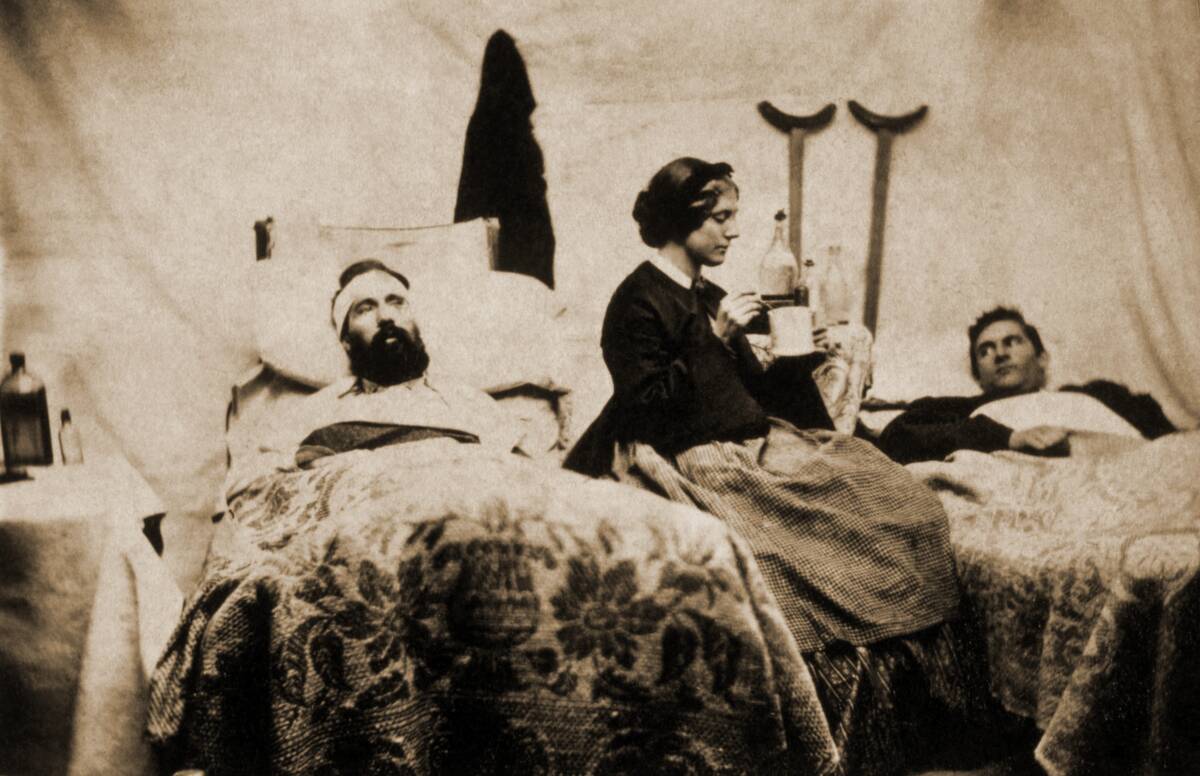
This image shows nurse Anne Bell caring for two wounded soldiers during a moment of calm inside of a field hospital.
Nurses and surgeons frequently dealt with limited supplies and were forced to carry out tasks such as amputations without significant anesthesia, while doing their best to contain diseases such as dysentery, typhoid, and gangrene.
Virginia was a major logistical hub.

This view of City Point, Virginia shows just how much firepower was being stored at this Union hub. City Point was located at the confluence of the James and Appomattox Rivers, and owing to its strategic location, briefly became one of the busiest ports in the world.
General Grant established his headquarters at City Point, and the Union Army constructed a massive supply depot and hospital complex on the site.
Women were rarely seen at headquarters.
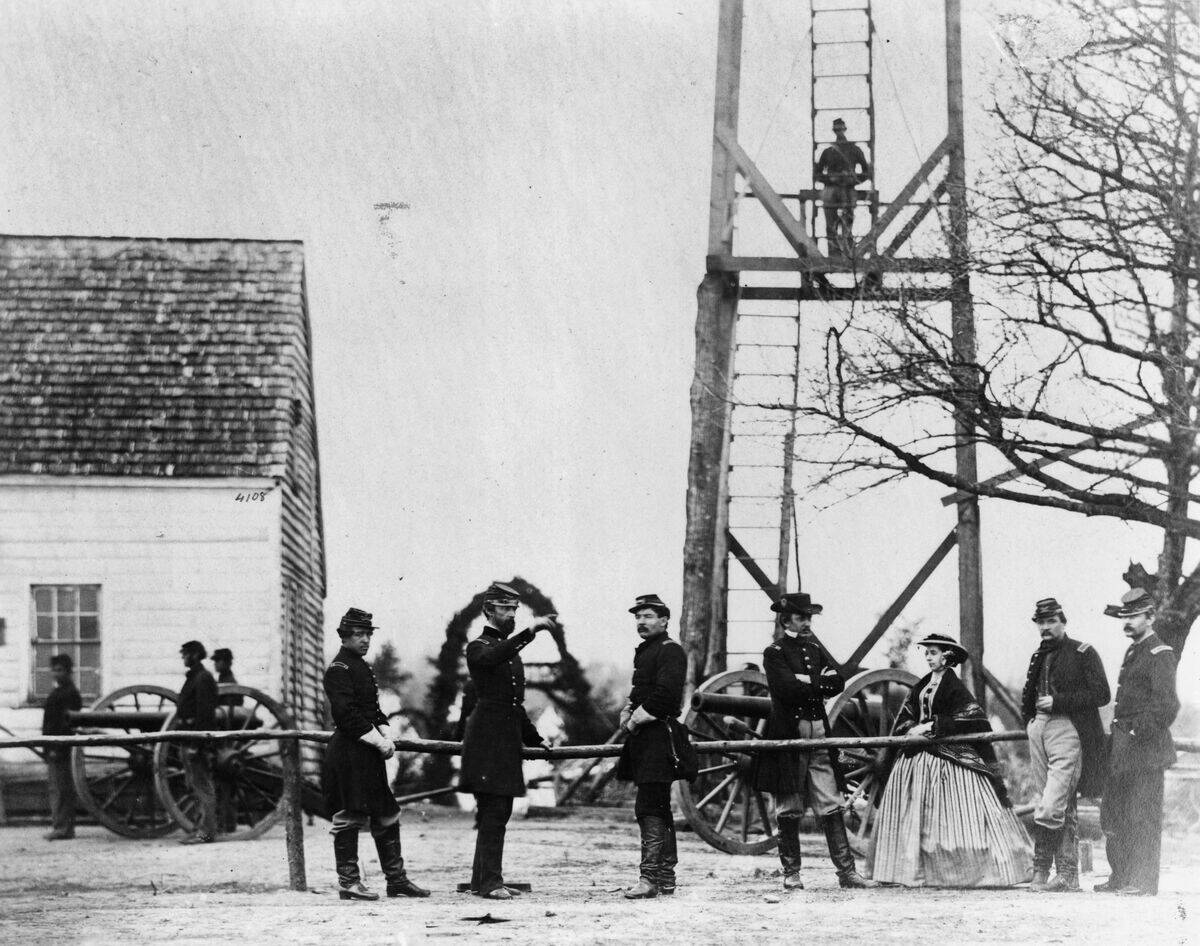
While nurses in field hospitals served an invaluable role during the war, women were rarely seen outside of these settings.
However, this image shows a woman visiting the Union Army headquarters at Miner’s Hill, Virginia. It’s speculated that she was either the wife of a high-ranking officer, or perhaps an agent of the U.S. Sanitary Commission.
The Gettysburg Address was stirring.
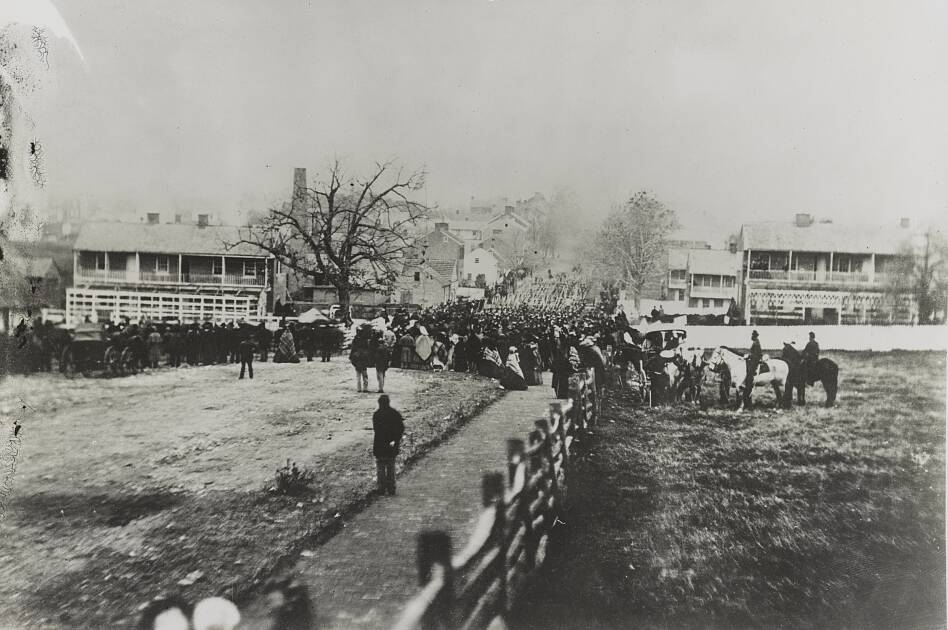
The Gettysburg Address is a nearly mythical event today, but this photo showing crowds and troops making their way to Gettysburg’s Soldiers’ National Cemetery to hear the speech gives a glimpse of what things looked like in real life.
The speech was just 272 words long, and lasted for about two minutes, but Lincoln’s call for a “new birth of freedom” with a government “of the people, by the people, for the people” went down in history.
The war was extensively photographed.

Photographer Sam Cooley and his crew can be seen next to their equipment, which was effectively a mobile photography studio.
These early photographers mostly used wet plate collodion photography, which could be a messy affair. Despite the efforts of Cooley and his crew, most of their plate photographs were destroyed.
Many boats were hastily constructed.

This image shows a Gunboat Brown, which was the name given not to any specific vessel, but to any of the brown-painted, often makeshift Union gunboats that patrolled coastal waters during the Civil War.
While these boats were rickety affairs with very limited firepower, the concept was quantity over quality, as the Union could use these boats to create blockades of Confederate ports.
Some field hospitals were better equipped than others.
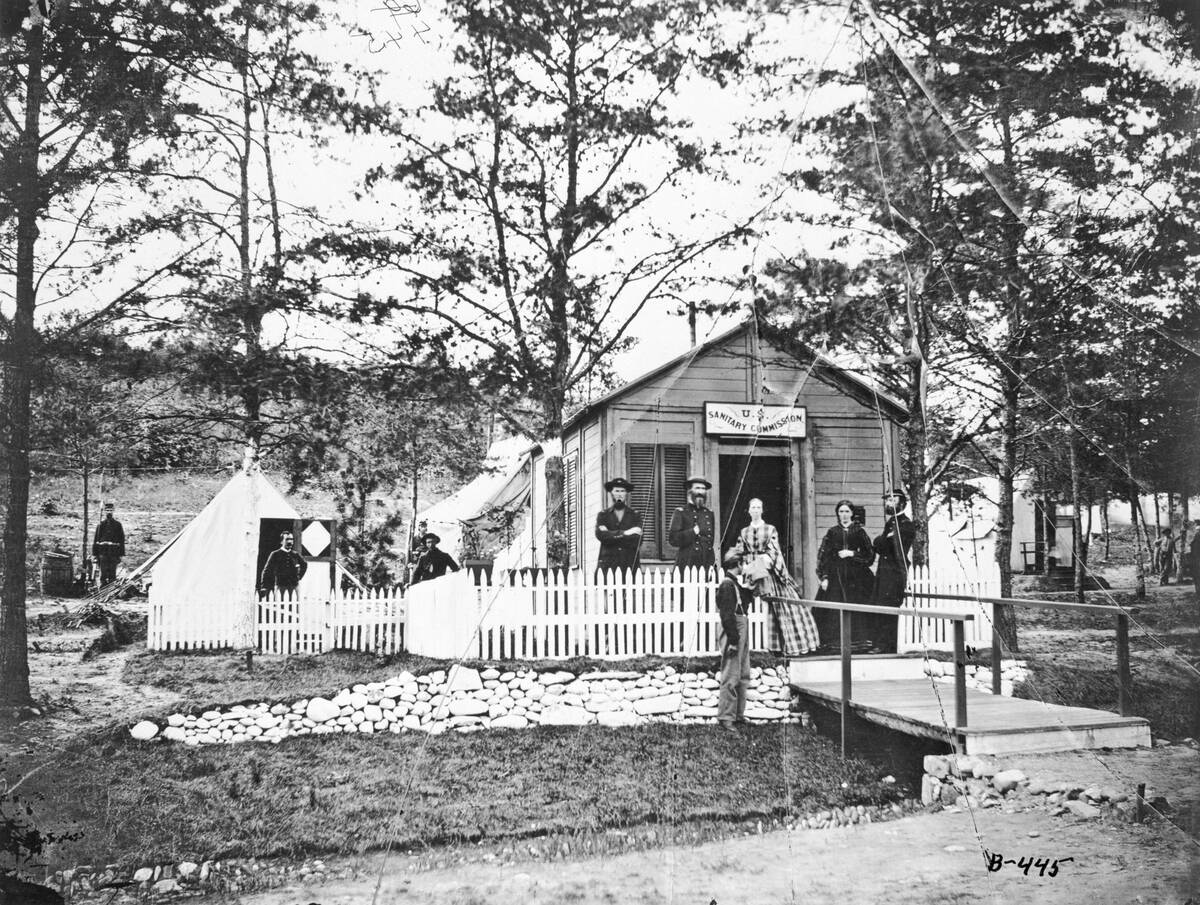
Field hospitals were an absolute necessity, and there was no single template for what one of these facilities might look like.
Some were located in tents, while others made use of existing buildings near the battlefield. This field hospital appears to be more sturdy compared to some of its tent-based contemporaries.
Many generals were West Point graduates.

The Civil War famously pitted Americans against Americans, and in many cases, the opposing generals in a given battle were former classmates.
This image of Union General Andrew Porter and his staff shows a typical complement of Civil War soldiers. Like many generals on both sides of the conflict, Porter was a West Point graduate who also served in the Mexican-American War.
The war made Ulysses S. Grant famous.
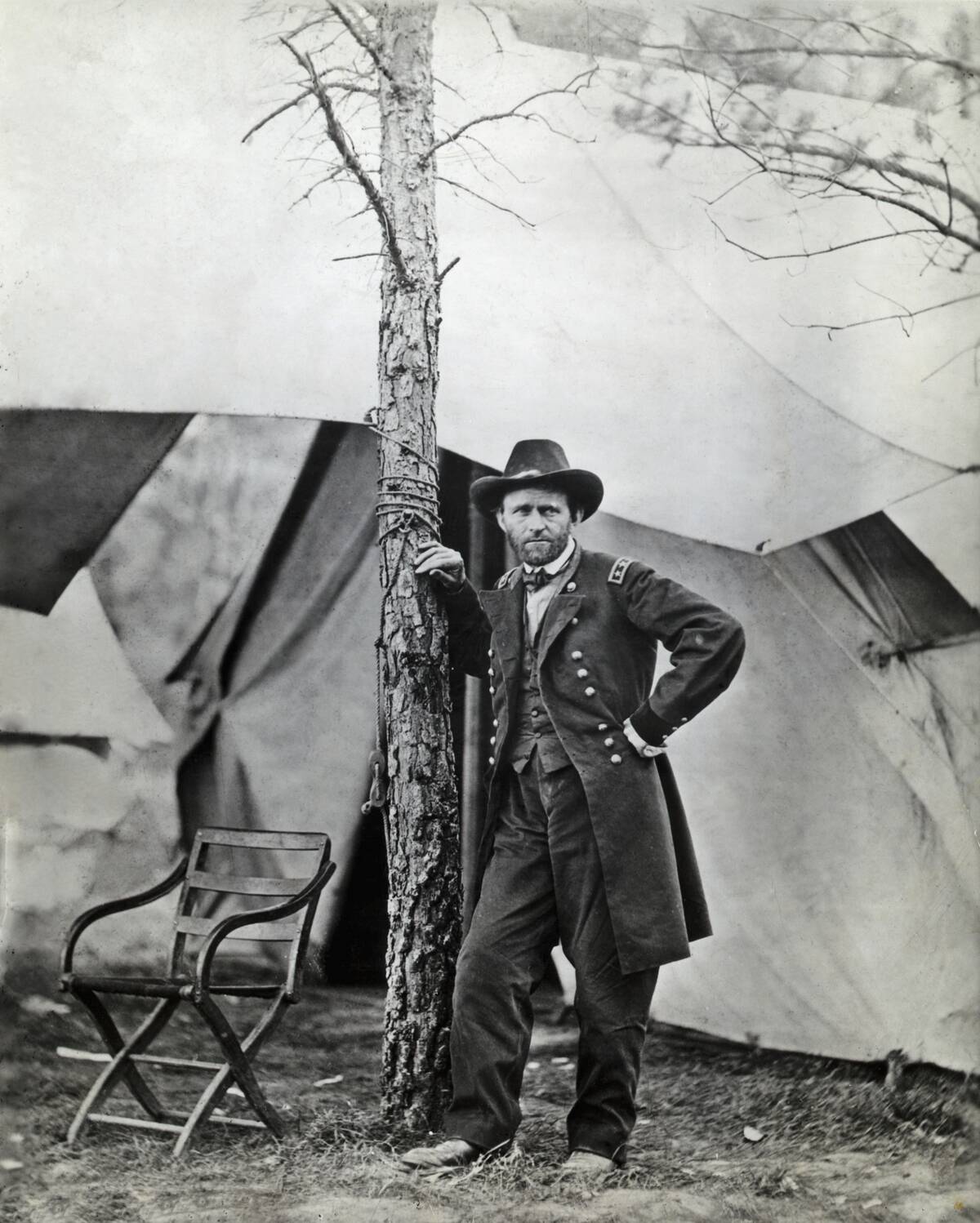
General Grant played a key role for the Union army during the Civil War, outmaneuvering Confederate forces en route to important victories at Fort Donelson and Vicksburg.
Grant’s final victory at Appomattox Court House in 1865 marked the effective end of the war. He would later become the 18th president of the United States.
Fort Sumter is where the first shots were fired.
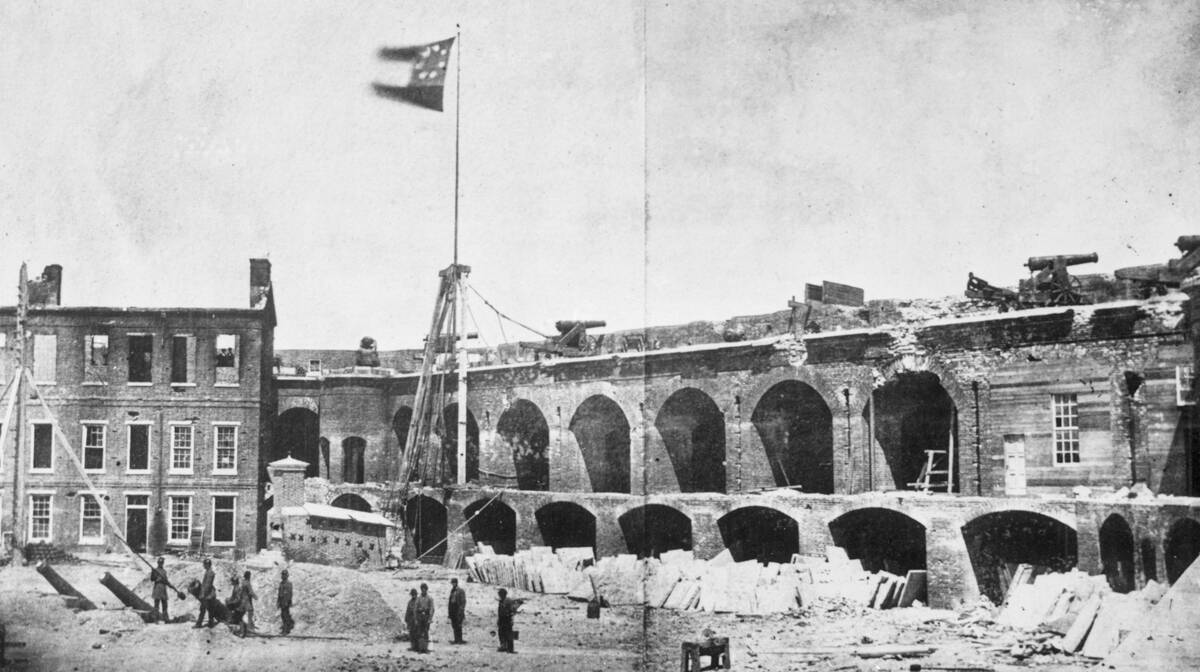
This seafort in Charleston Harbor was only partially built by the early 1860s, but a complement of Union troops moved to occupy the fort in the midst of escalating tensions.
After a prolonged standoff over the fort’s status (South Carolina had already voted to secede), Confederate General P.G.T. Beauregard opted to open fire on the fort on April 12, 1861. This is regarded as the beginning of active conflict in the Civil War.
Journalists marched with armies.

Journalists from the New York Herald can be seen in this photo as they march with the Union Army. During the war, journalists were often embedded with both the Union and Confederate Army.
These “war correspondents” not only represented the changing face of news media, but paved the way for future journalists who reported from the battlefield.
Washington was still being built.
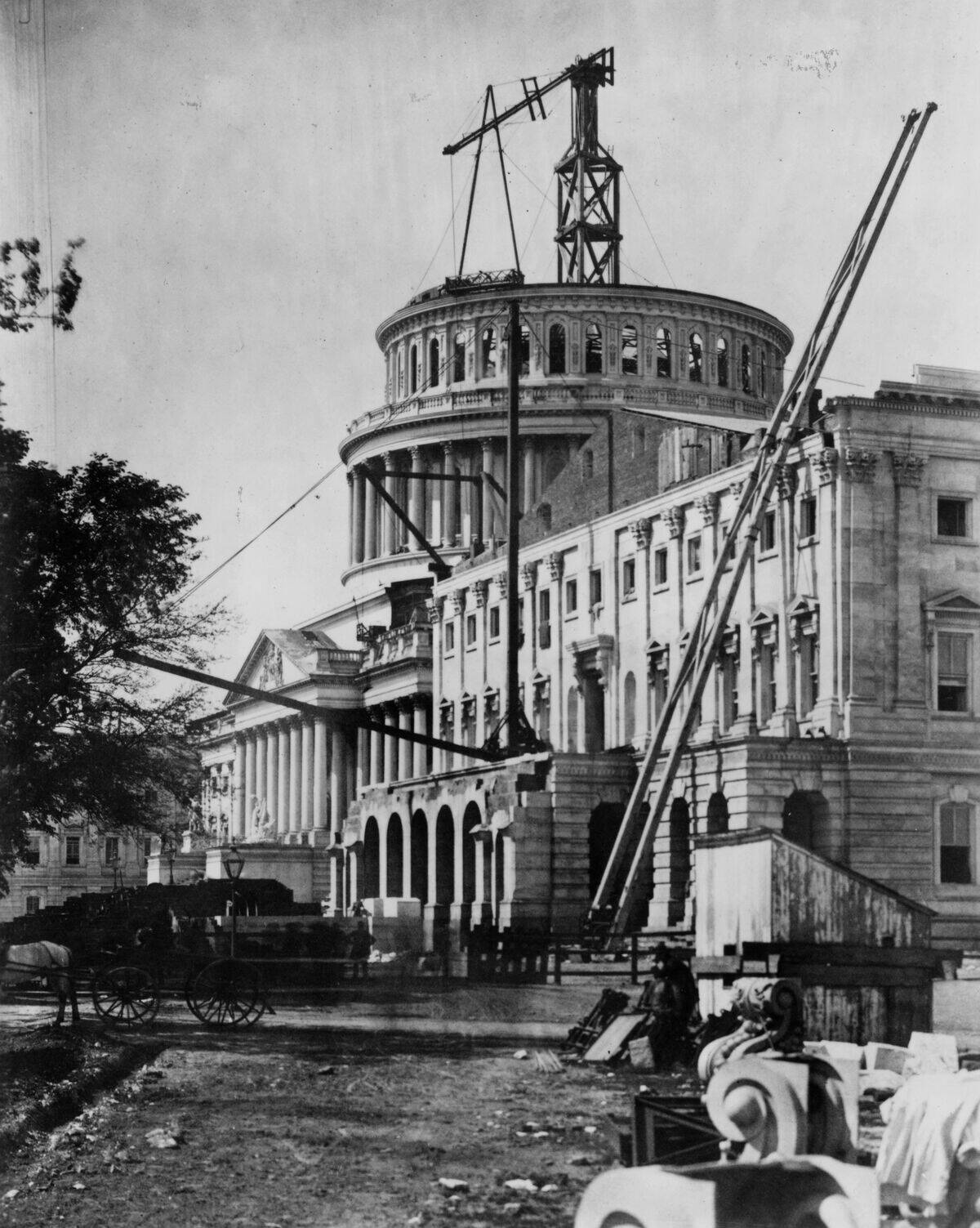
Construction on Washington’s Capitol Building started all the way back in 1793, but by the 1860s, the building’s famous dome had still not been completed.
This was in part due to damage inflicted on Washington during the War of 1812. While Civil War fighting never threatened the grand edifices of Washington, there were concerns early in the conflict that Confederates might move to seize the capital.
Some cities were heavily damaged.
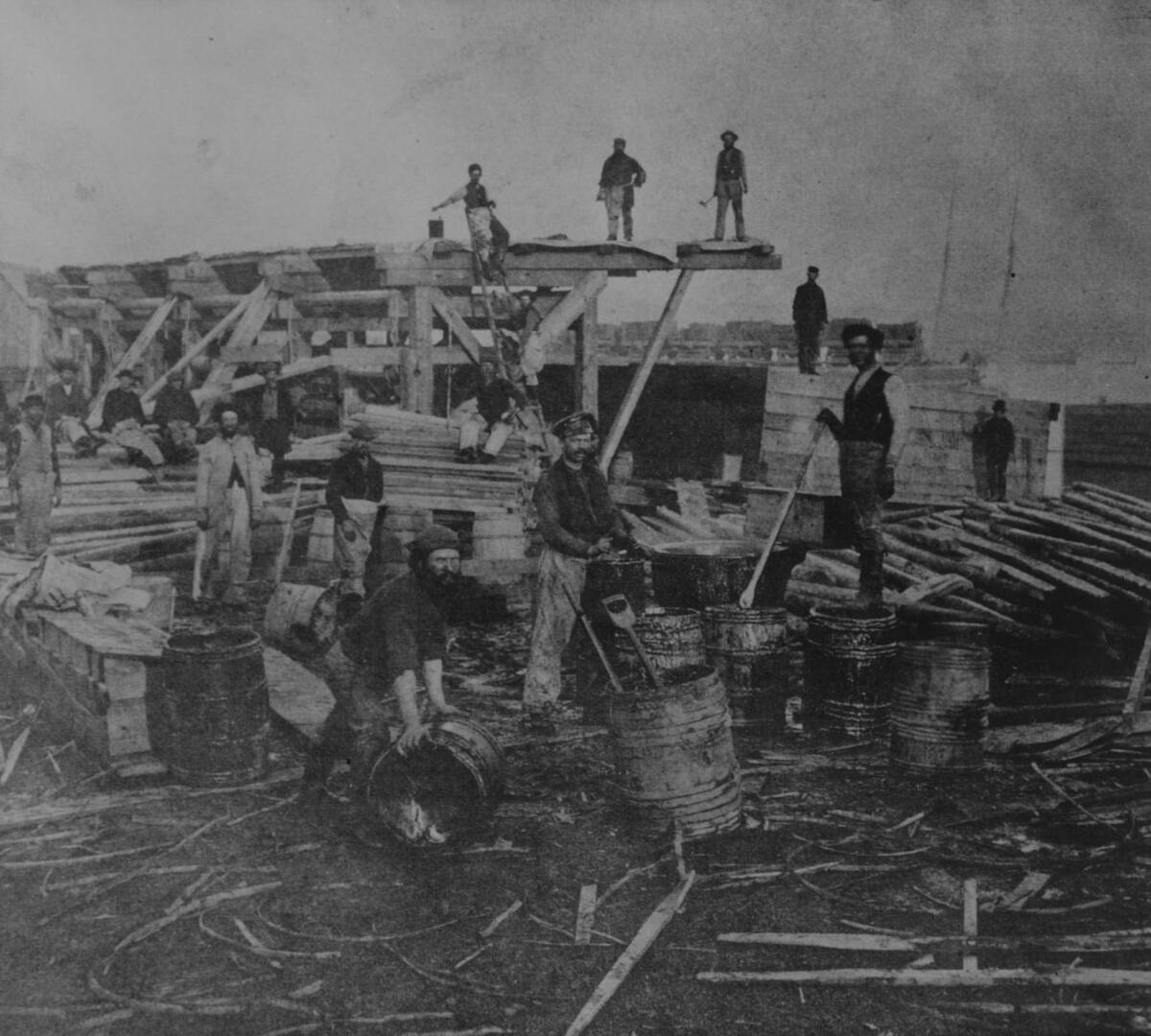
Numerous U.S. cities, particularly in the southern states, were heavily damaged by years of conflict.
Although it isn’t specified where these 1865 reconstruction efforts were taking place, major centers like Atlanta, Richmond, and New Orleans all experienced widespread devastation during the Civil War.
Riverboats were converted into gunboats.

This image shows the USS Massasoit, a Union gunboat, on the James River in Virginia in 1864. The ship was first built in 1855 as a side-wheel steamer, but was converted into a gunboat when hostilities broke out.
The ship was mostly used in a patrol and blockade role, and did not endure heavy damage. It, along with many other Union boats, was effective at choking off Confederate supply lines.
The fighting wasn’t constant.
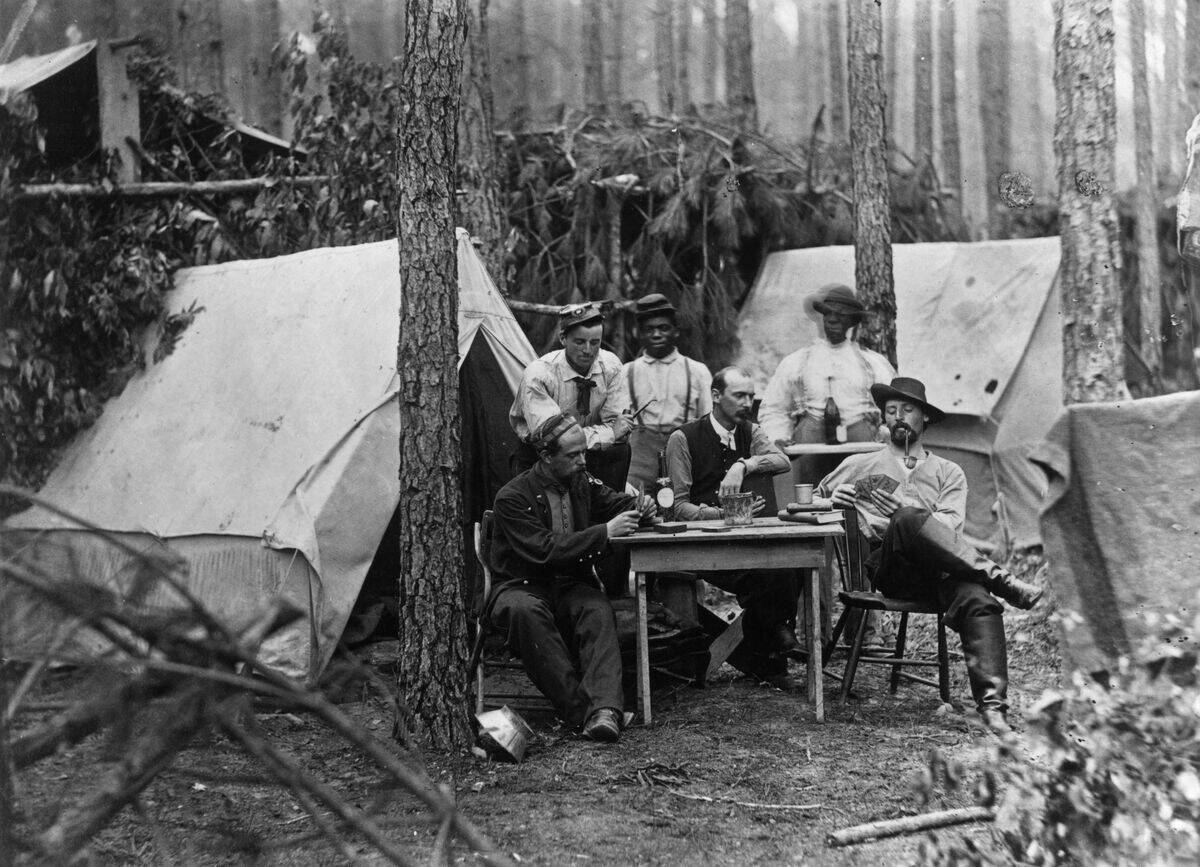
There’s no doubt that the horrors of war were significant, but soldiers still experienced downtime, as seen in this photo of soldiers relaxing at a Confederate camp.
Breaks were usually filled with routine activities like cooking, cleaning weapons, writing letters and socializing. These brief moments of relaxation helped troops cope with the brutal conditions of war.
People crossed rivers to freedom.
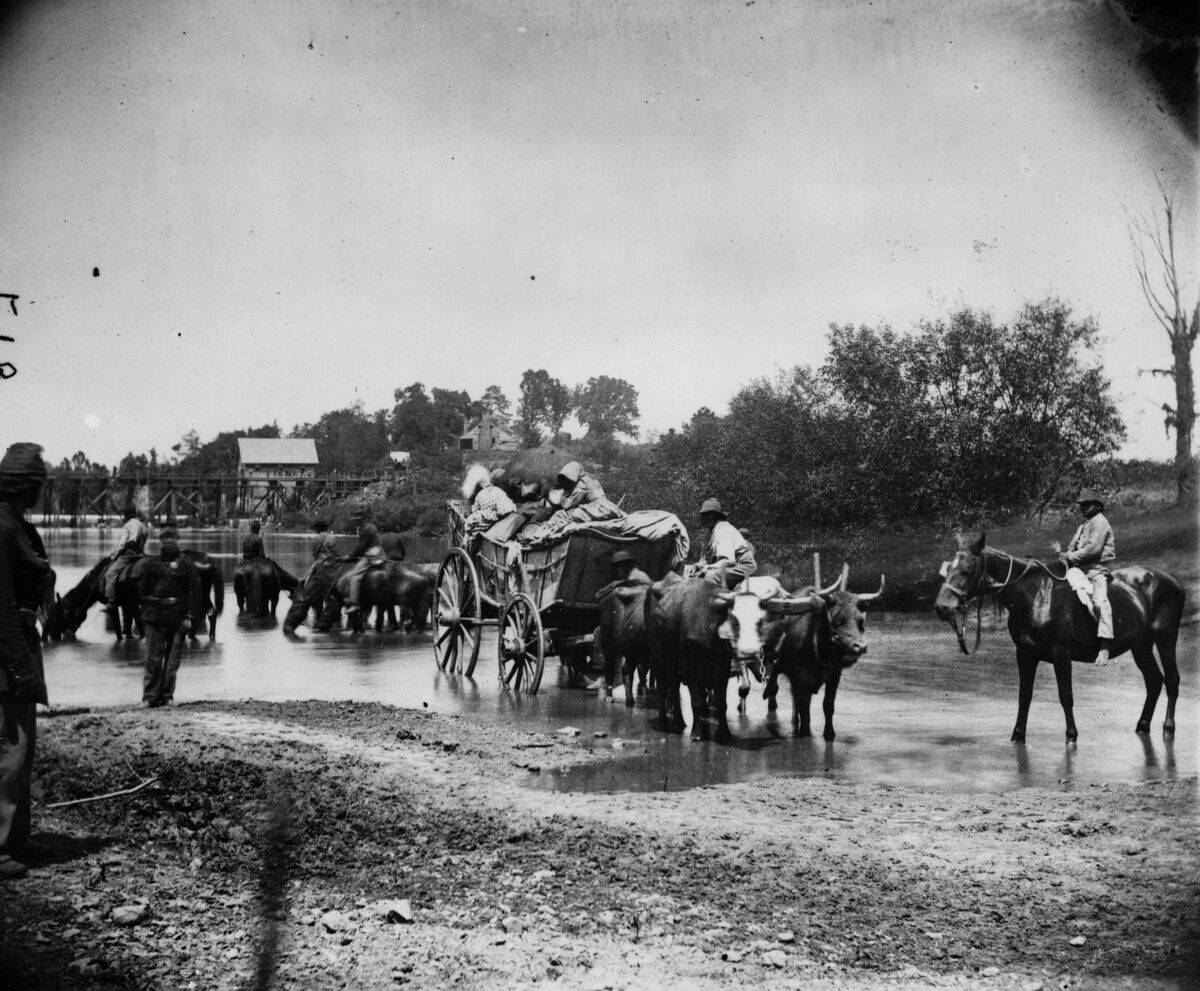
For enslaved people, the border between the Confederacy and the Union represented a kind of finish line, where they’d be safe if they could just make it to the other side.
The Rappahannock River in Virginia was one such boundary, as it formed the strategic boundary between Union and Confederate territories. These formerly enslaved people are emerging onto the Union side, which means they’re officially free, provided the Fugitive Slave Act doesn’t rear its ugly head for them.
Live entertainment was a must.

This photo of musicians performing at a Union Army camp represents a favorite pastime of the era: Gathering around a band to enjoy some live music.
While the bands were often improvised, they played popular songs and folk tunes of the era, which made it easy for soldiers to sing along.
The Confederacy inflicted heavy damage at Chancellorsville.
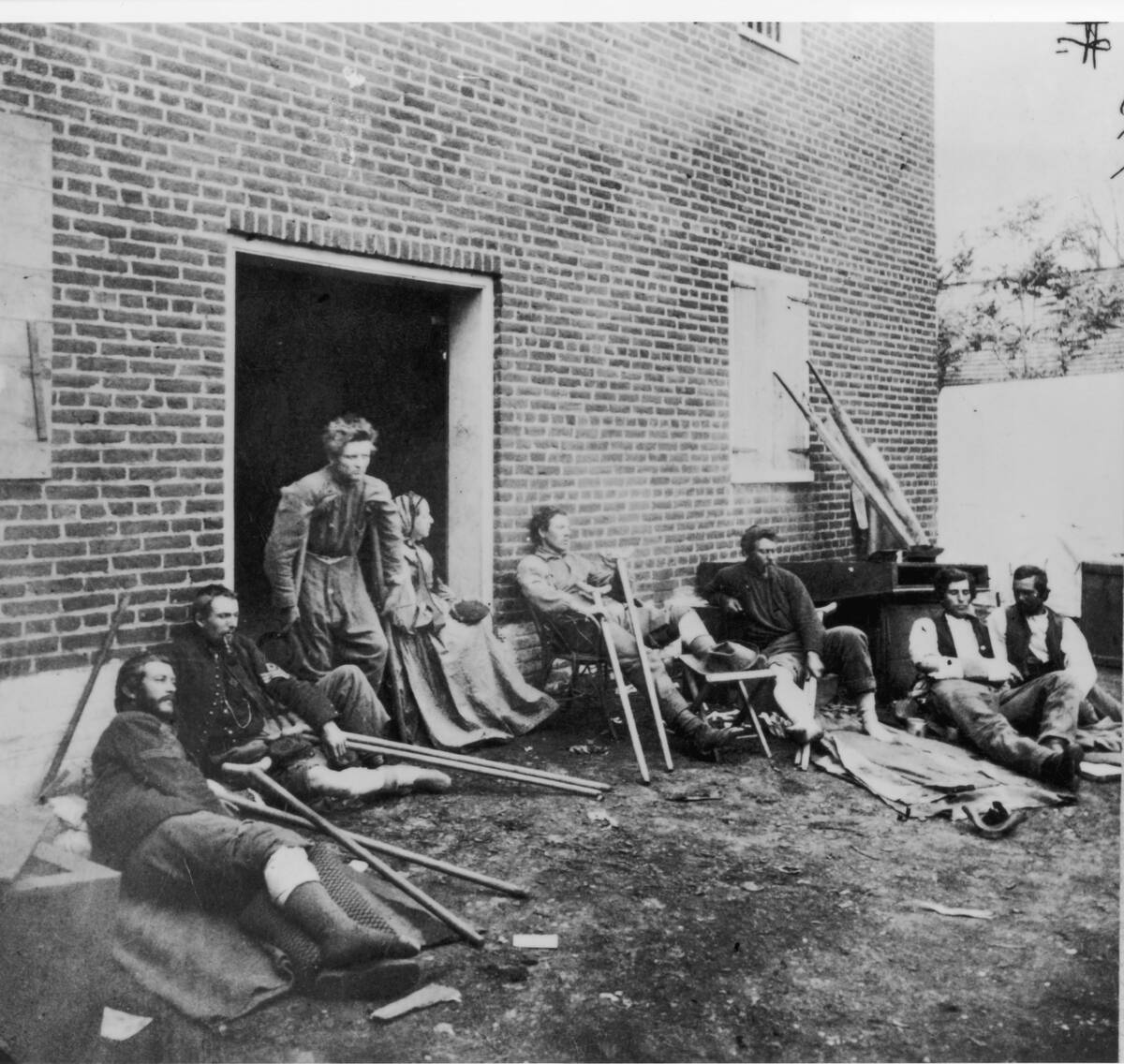
The Battle of Chancellorsville was fought in Spotsylvania County, Virginia, during a one-week period in the spring of 1863. It’s generally regarded as Robert E. Lee’s greatest victory of the Civil War.
While the Union forces commanded by Major General Joseph Hooker had the initial advantage, Lee’s decision to flank the Union troops while outgunned helped turn the battle into a stunning Confederate victory. This image shows wounded Union soldiers in the immediate aftermath.
Music had a role on the battlefield as well.
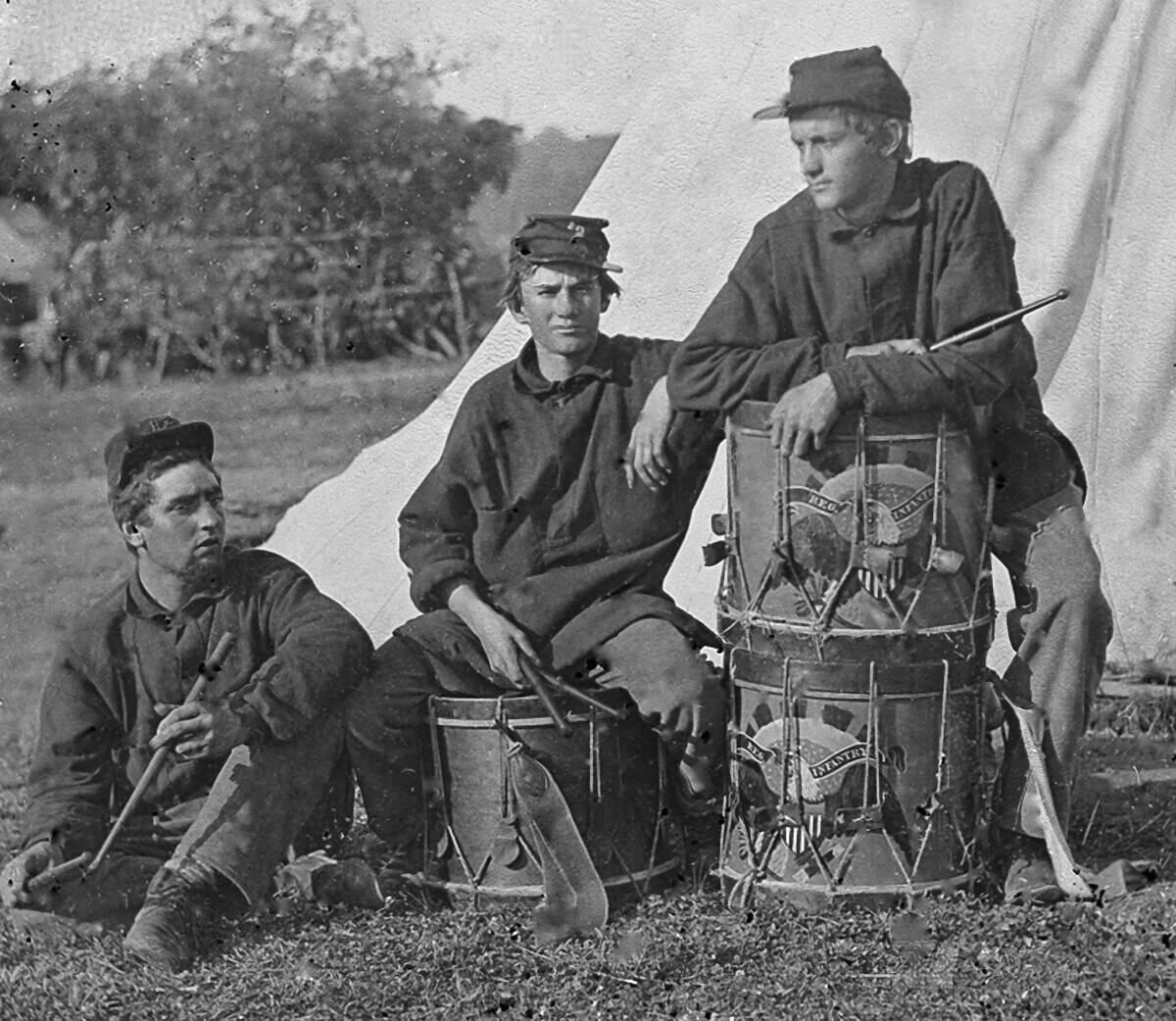
This photo of the 2nd Rhode Island Infantry shows a different kind of Civil War band: The kind that would play not only during parades and camp gatherings but during battles as well.
Drums, bugles, and fifes could be used to signal commands and coordinate movements, while patriotic ditties could help to motivate troops.
Horses were relied on heavily.

While horses played a role in major conflicts well into the 20th century, their use diminished significantly as more mechanized solutions came into play.
Of course, in the 1860s, technology like tanks and motor vehicles were still in the distant future, which meant that horses played a critical role for both sides of the conflict.
The destructive potential of artillery was on full display.
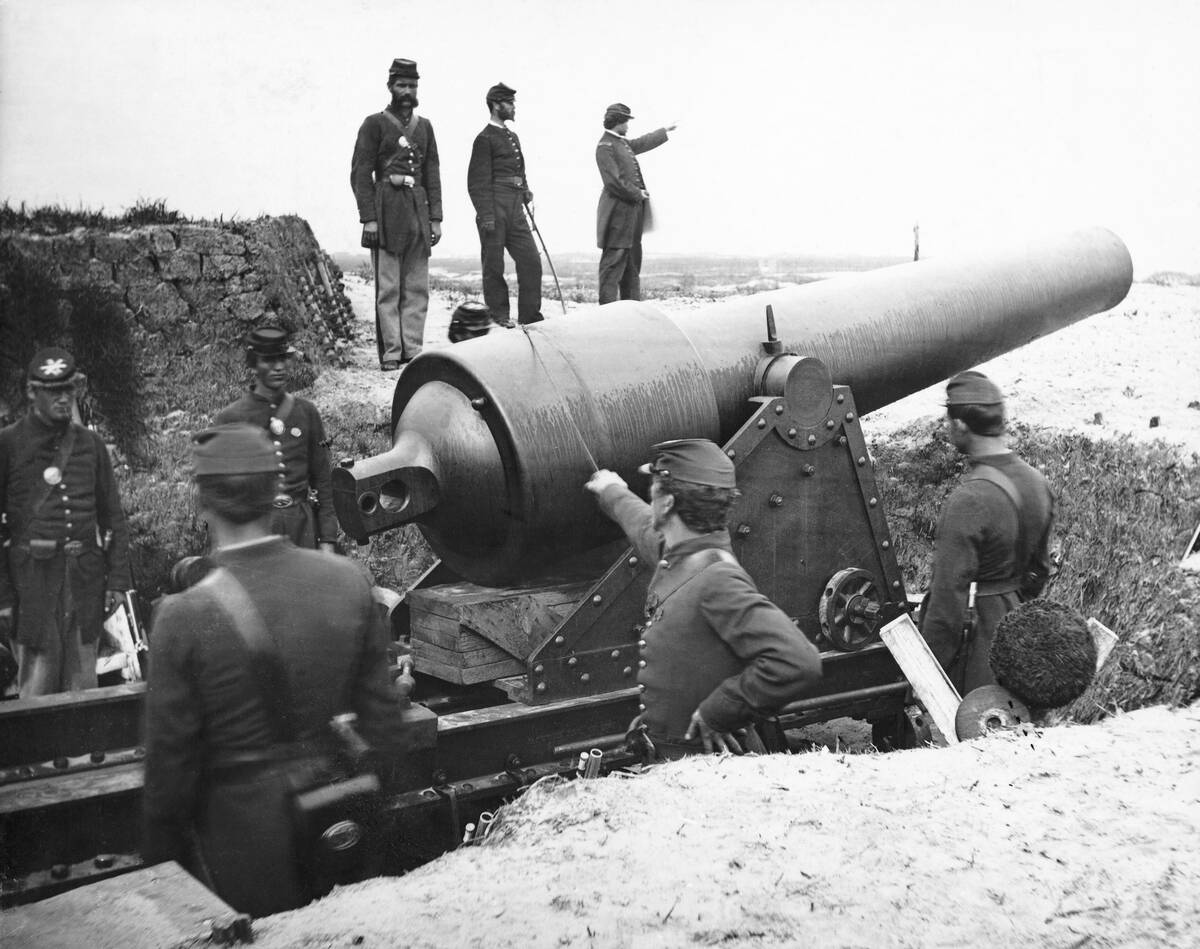
The Civil War represented a major technological step forward when it came to large field guns or artillery, which included subgroups such as cannons, howitzers, and mortars.
These massive guns could fire explosive shells or mortar shots at long distances, making them a significant instrument of destruction.
The draft was controversial.
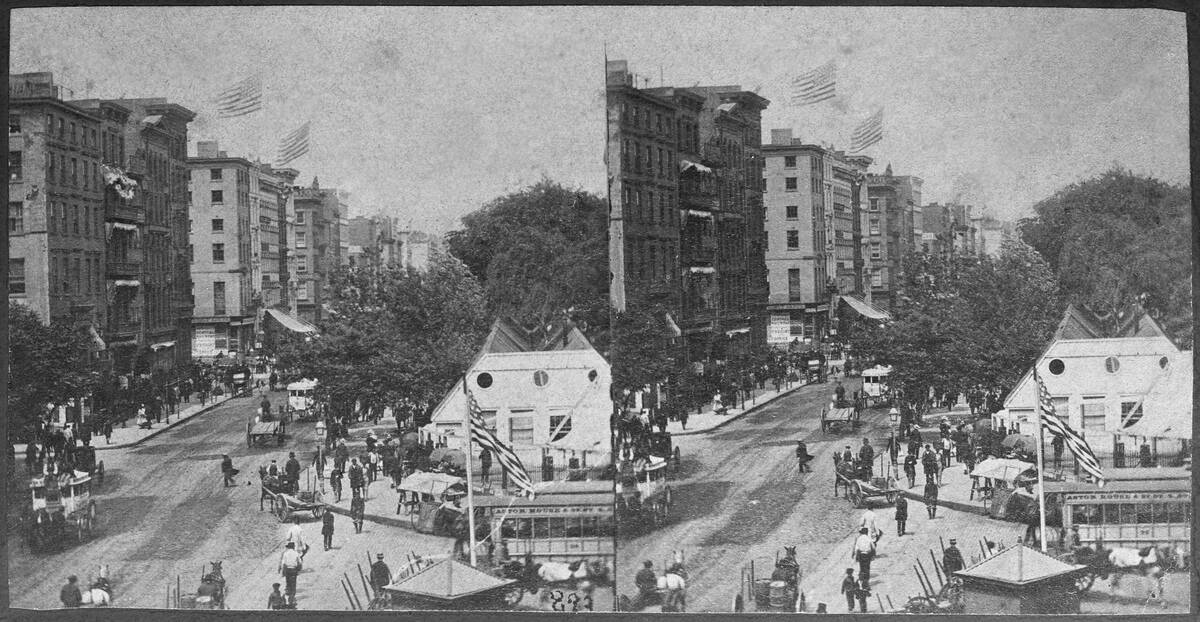
This image shows a recruiting station that’s been set up on Fulton Street in Manhattan. In 1863, the same year this photo was taken, the Draft Riots erupted in New York in response to a recently-passed conscription law that required men to serve in the military.
The law controversially allowed for wealthier men to avoid service by paying a $300 exemption fee. Needless to say, many saw this as a tool that disproportionately affected the poor.
Charleston endured heavy fighting.
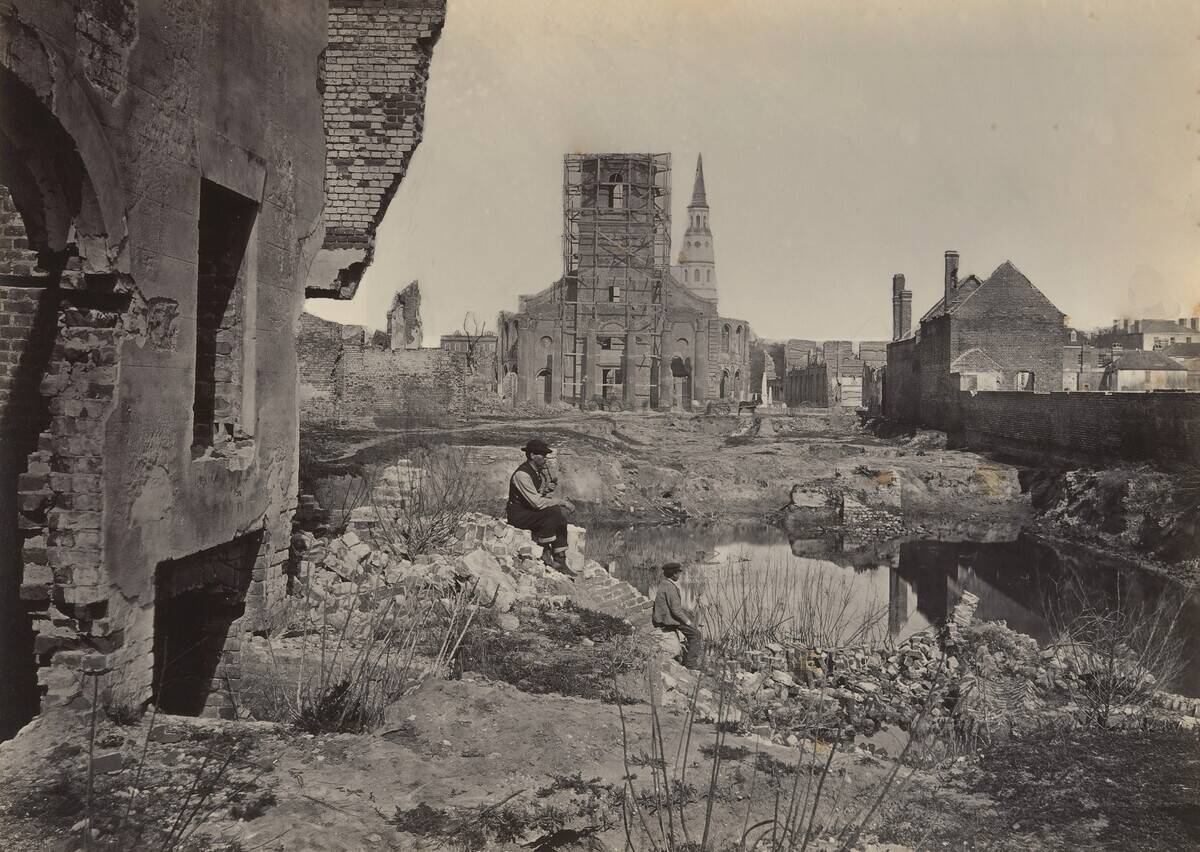
Charleston, South Carolina was a focal point for fighting throughout the Civil War, and was left in ruins after the Confederacy surrendered.
The Siege of Charleston lasted for two years, during which vast parts of the city were destroyed. The city’s recovery was slow, but it gradually built itself back up during the Reconstruction period.
This stately house was heavily damaged.

This image shows Atlanta’s Ponder House following its shelling in the wake of the Battle of Atlanta in 1864. Like many other houses in the city, the house was affected by the scorched-earth military tactics of Sherman’s march to the sea.
Today, it stands as a monument to Atlanta’s antebellum past, and the violence that threatened to tear the country apart.
General Sherman left Atlanta in ruin.
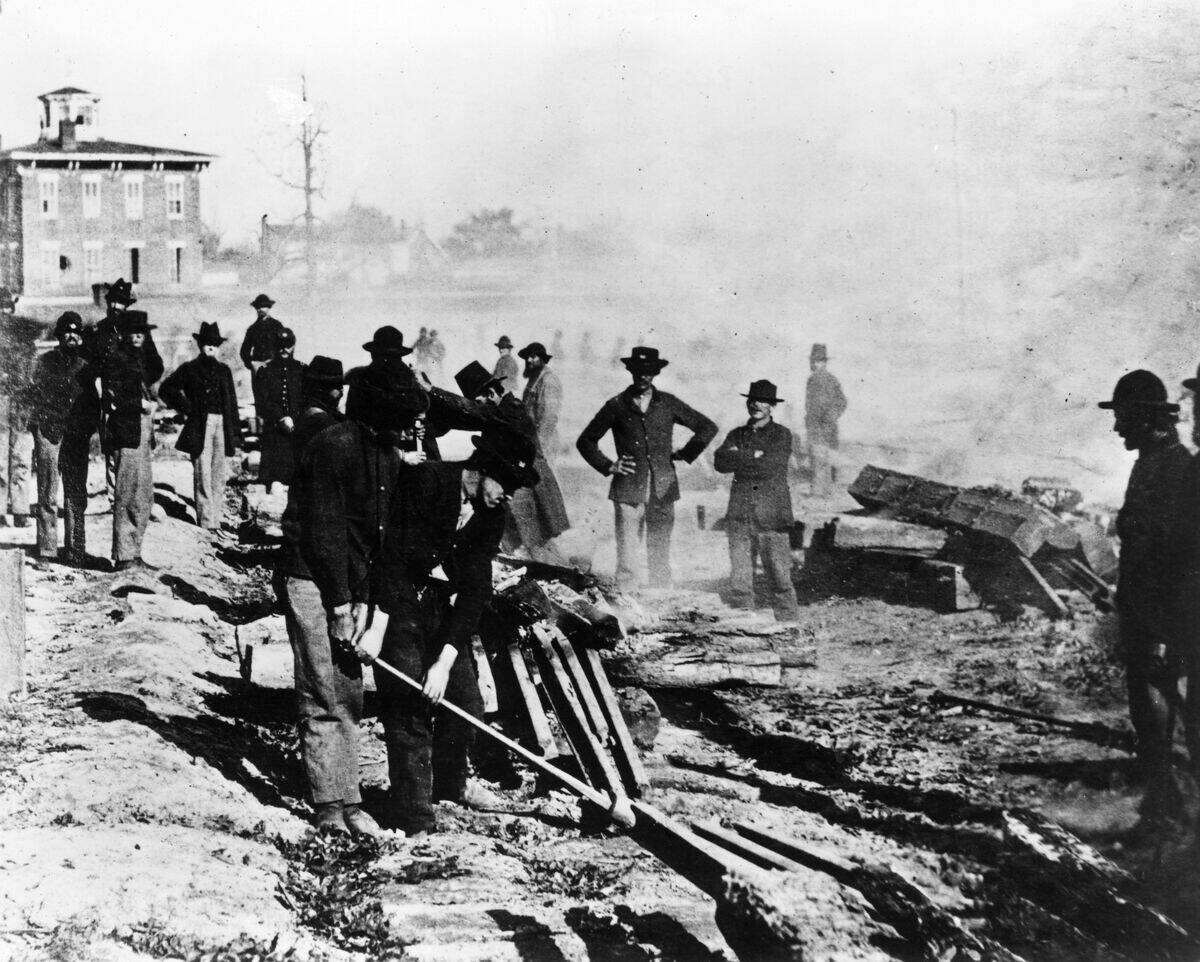
Union General William Tecumseh Sherman conducted a destructive campaign through Georgia in 1864 that marked a major turning point in the war.
Sherman’s troops captured Atlanta, then worked to disable the Confederacy’s capacity to wage war by killing livestock, burning fields, and tearing up railroads. Their march from Atlanta to Savannah left a 300-mile path of destruction.
Joseph Hooker fought in several battles.
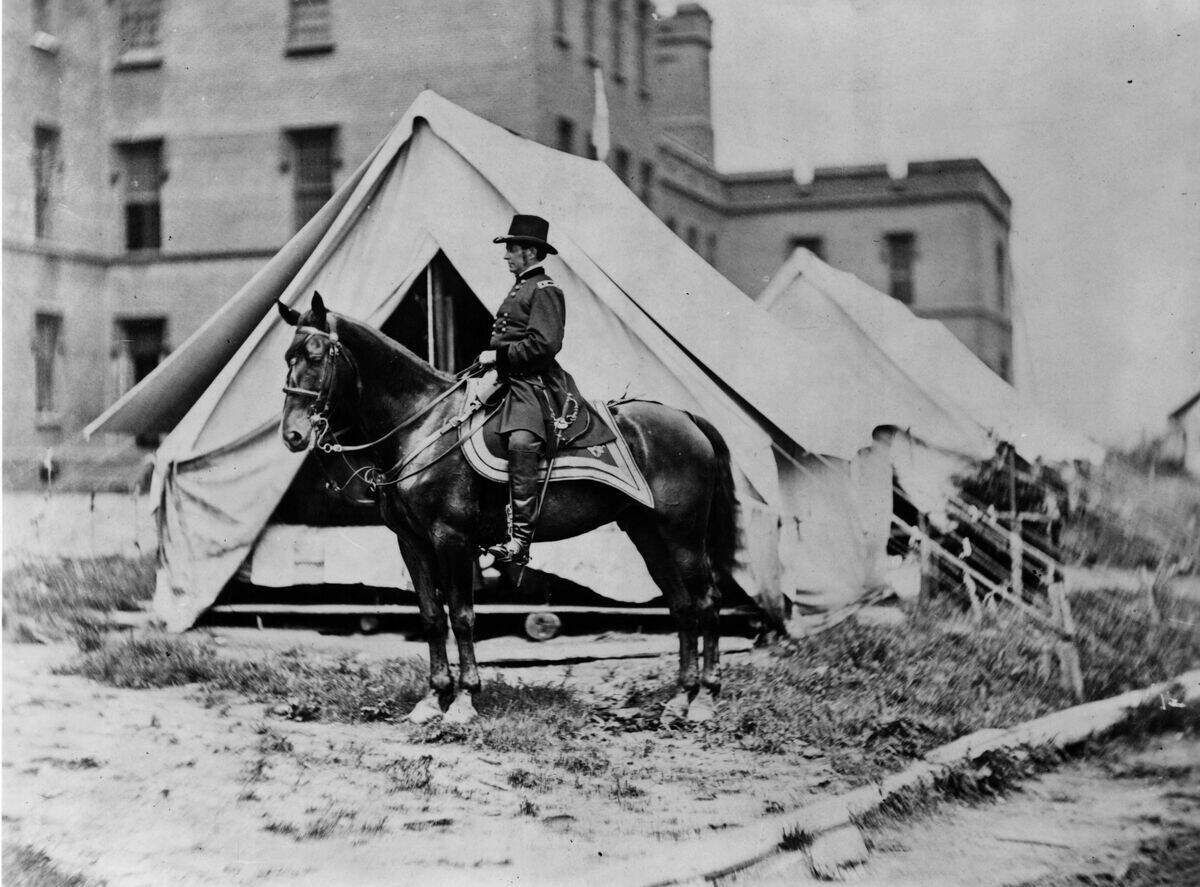
Major General Joseph Hooker was a Union officer who participated in the Battle of Chancellorsville, where he was outmaneuvered by General Lee.
Hooker was able to salvage his reputation somewhat the following year, when he contributed to a Union victory at the Battle of Lookout Mountain. He survived the fighting and passed away in 1879.
Sherman’s march broke the South’s resolve.
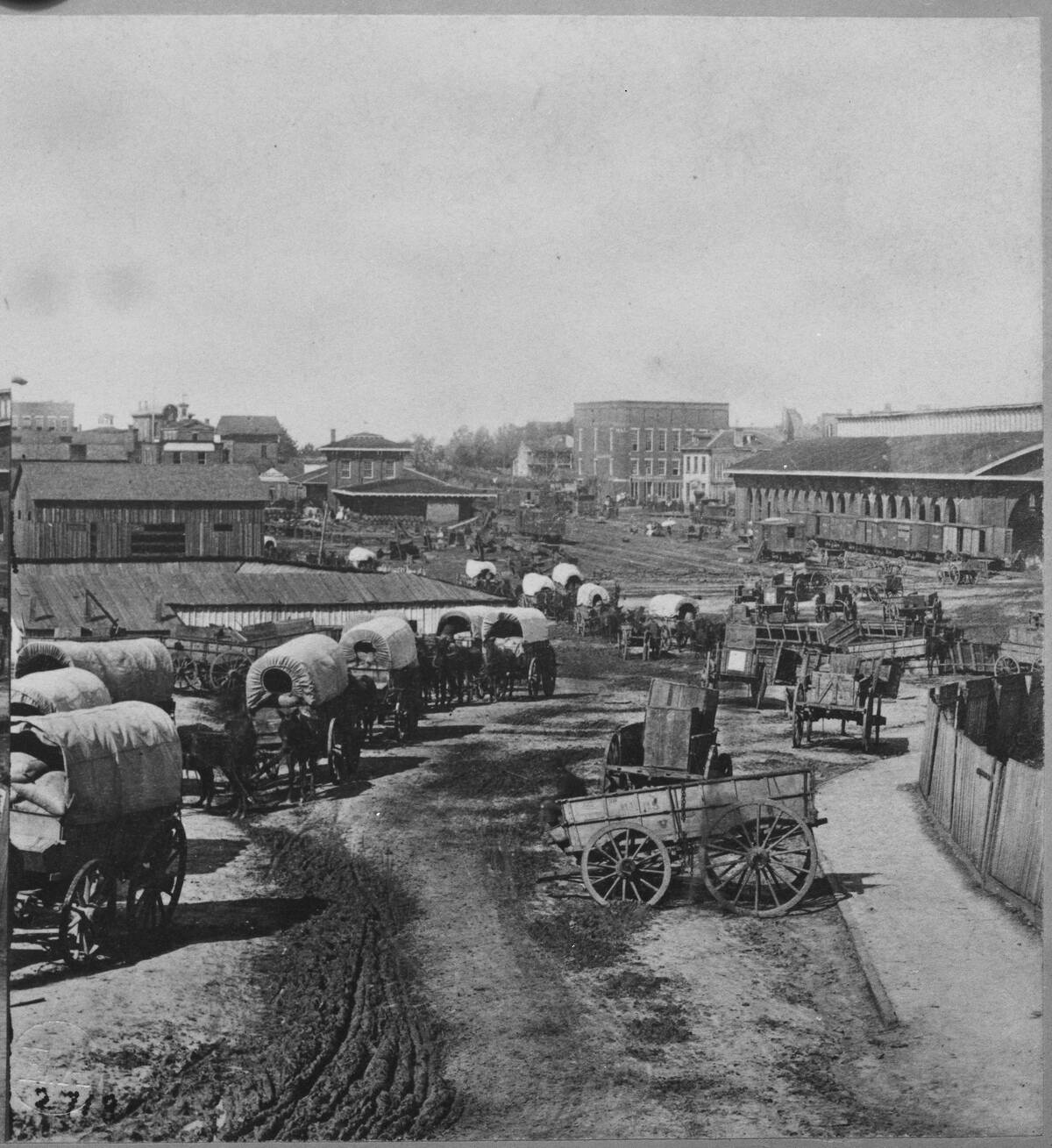
This image shows Atlanta during Sherman’s occupation of the city, a period that weakened resolve not just in Atlanta, but in the entire Confederacy.
This was Sherman’s goal, of course, and his march is generally regarded as a ruthless but effective strategy to break down the Confederacy.
There were many ways to destroy rail lines.

This man can be seen examining the bent and torn up Confederate train tracks after they were disabled by Union troops.
Because the goal was to shut down train lines, troops did whatever they could to damage the rail lines and make them difficult to rebuild. This included not just tearing up tracks, but also bending, warping, and even melting them.
All the while, civilians were on the edges of the conflict.

The Civil War took place across numerous states that were already thoroughly populated by the 1860s, which means that civilians often found themselves uncomfortably close to the fighting.
These children are staring across a river at a group of Union soldiers, who have stopped to water their horses during a lull in the fighting.
Families were torn apart.
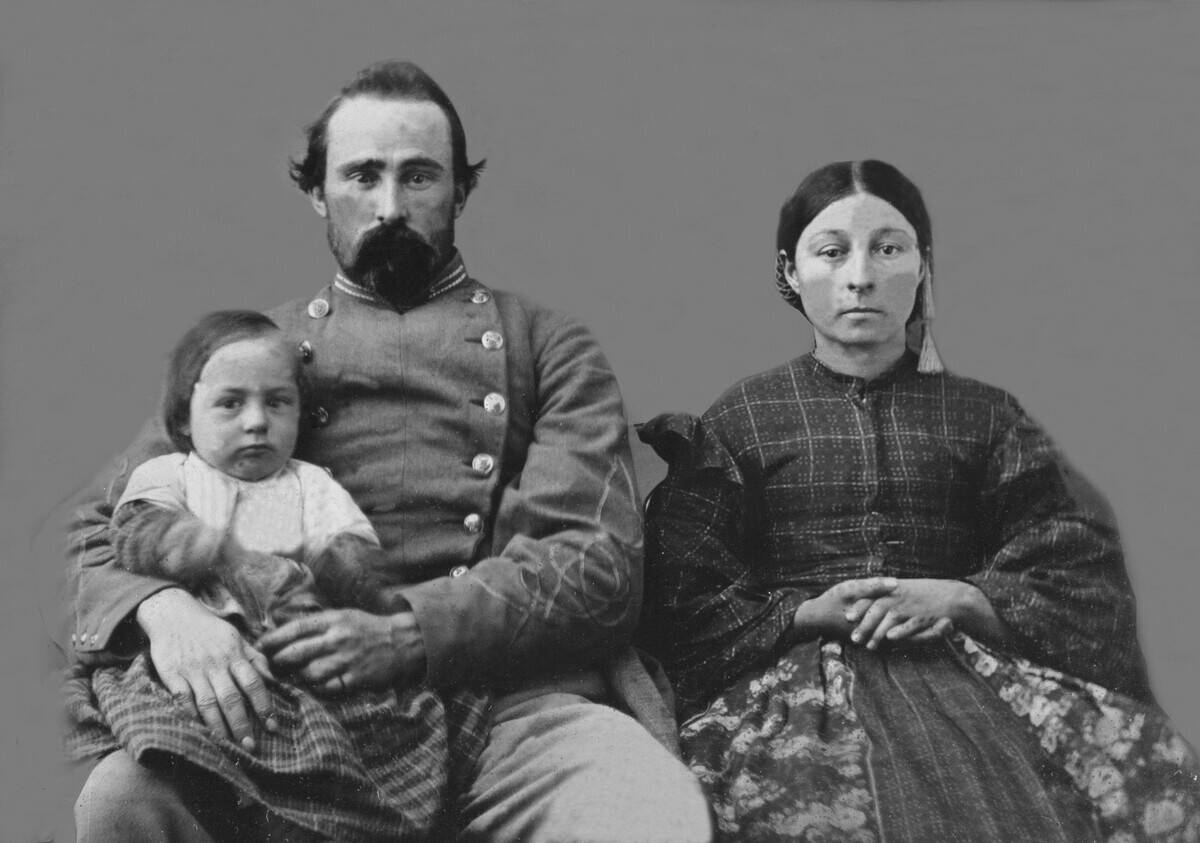
This 1863 photo shows a Confederate soldier during a quiet moment mid-war as he poses with his wife and child. There’s no word on who this man is, so his fate is unknown.
It’s a powerful reminded that many of the people fighting in this bloody conflict were ordinary Americans who saw their lives permanently disrupted by the carnage.
New technology was on full display.
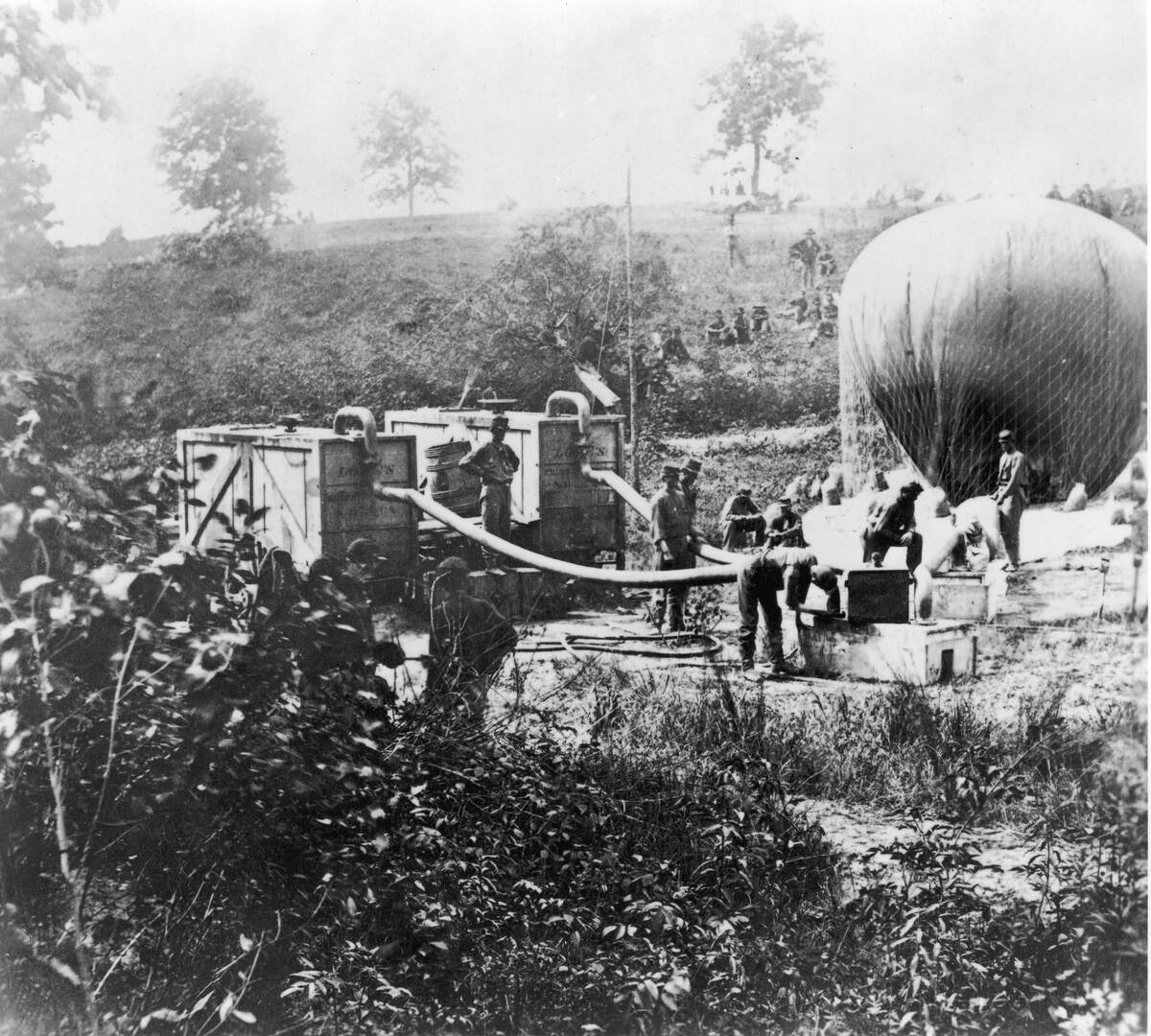
Both sides in the conflict experimented with novel forms of warfare that had rarely, if ever, been seen before. The Confederates experimented with submarines, while the Union had an official Balloon Corps.
This early example of aerial warfare didn’t consist of much — literally a balloon that was tethered to the ground for observation purposes. Still, it gave generals a critical bird’s eye view of the battlefield.
Some regiments became famous.

Whether a soldier sought glory or not, their movements were dictated by generals, and some regiments didn’t see significant fighting during the war.
The 119th Pennsylvania Infantry, seen here, saw action in several key battles, including Antietam, Fredericksburg, and Gettysburg.
Railroad hubs played a big role.

This railroad hub in Philadelphia was a hive of activity, as it marked a strategic point for the transportation of troops, supplies, and other equipment.
Both sides in the Civil War relied heavily on railroads, which is partially why Sherman’s march, in which he tore up Confederate railroads, was so devastating.
Petersburg, Virginia was a critical site.
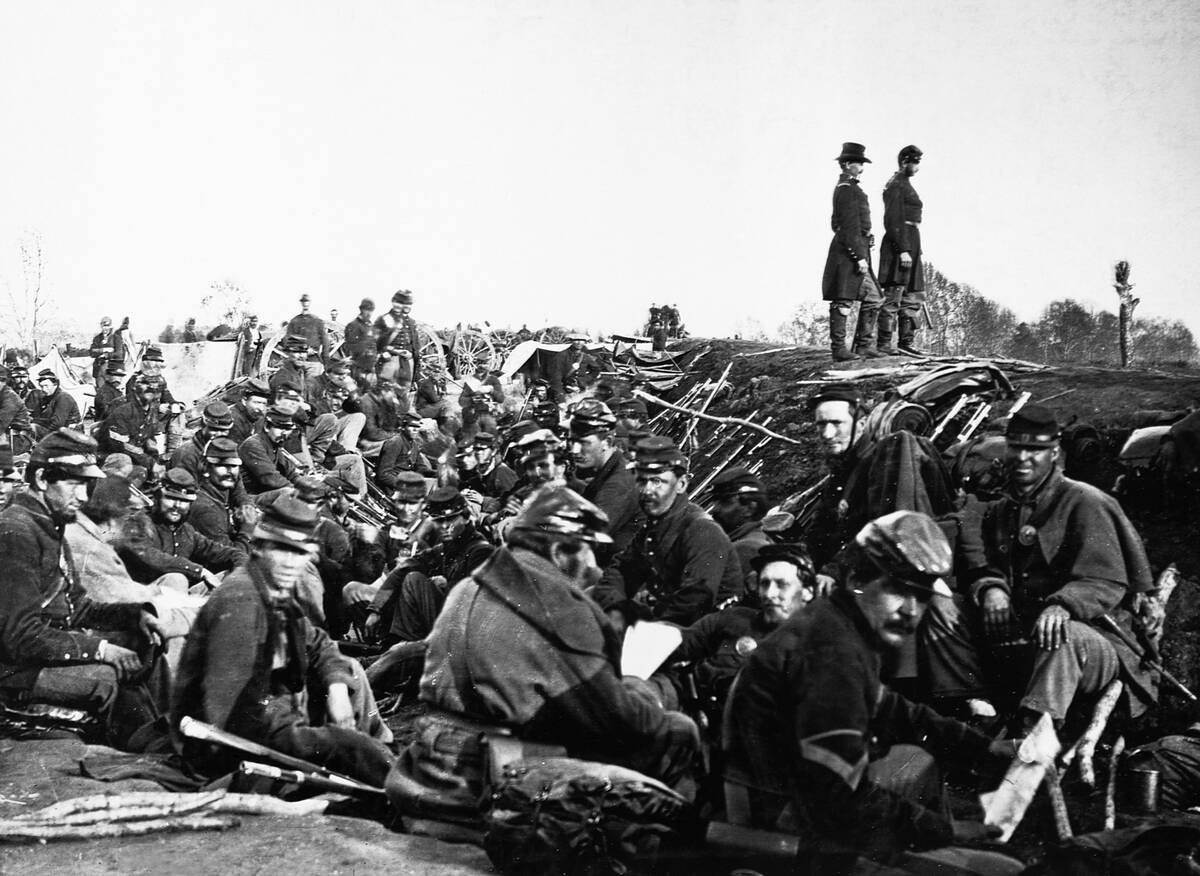
Soldiers can be seen in the trenches while generals survey the battlefield in Petersburg, Virginia. This was part of a prolonged siege that lasted for nearly a year.
Union General Grant engaged in trench warfare, similar to what was seen later in World War I, in a drawn-out siege that eventually forced the Confederates to evacuate.
Infrastructure was hastily built.
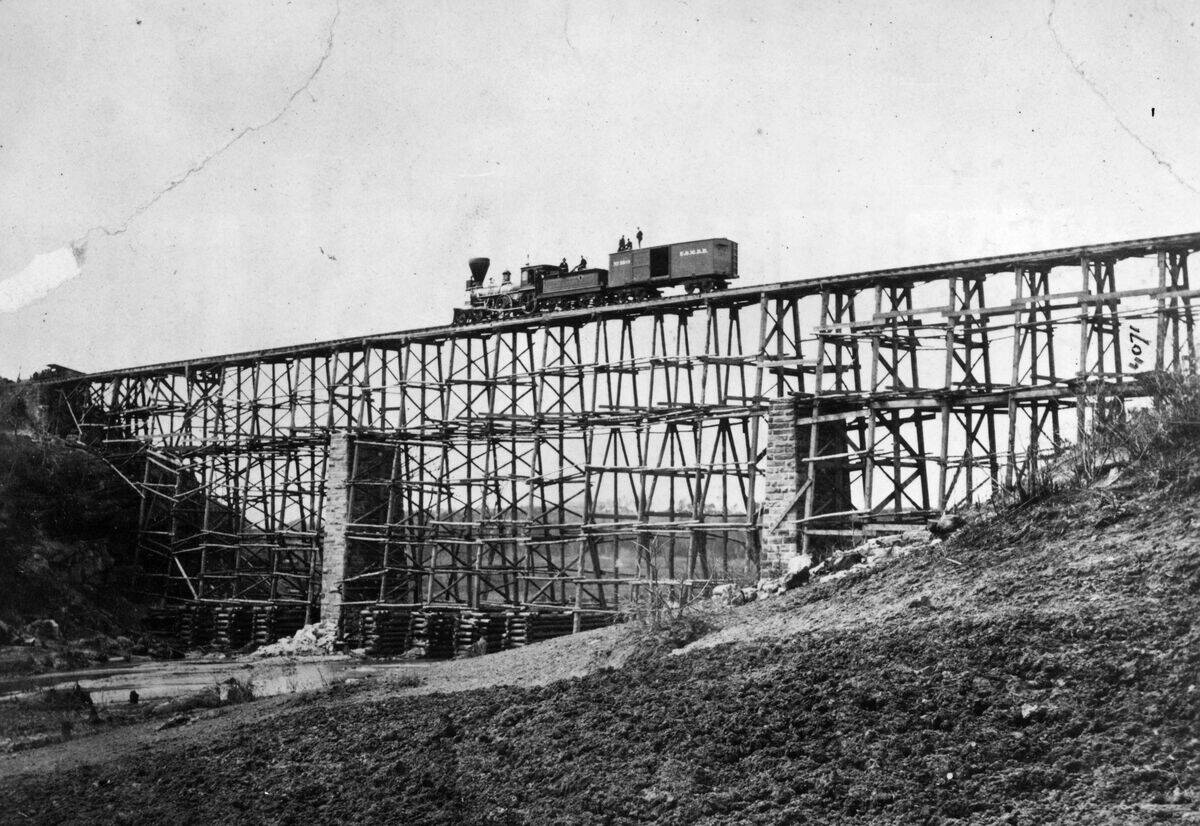
The Potomac Creek Bridge in Virginia, seen here, was a strategic location as it linked the Confederate capital of Richmond to the southern states. It was also noteworthy for being built in just nine days.
Later on, as the Confederacy grew more desperate, they destroyed their own bridge to prevent Union troops from using it.
Camp life had unusual forms of entertainment.
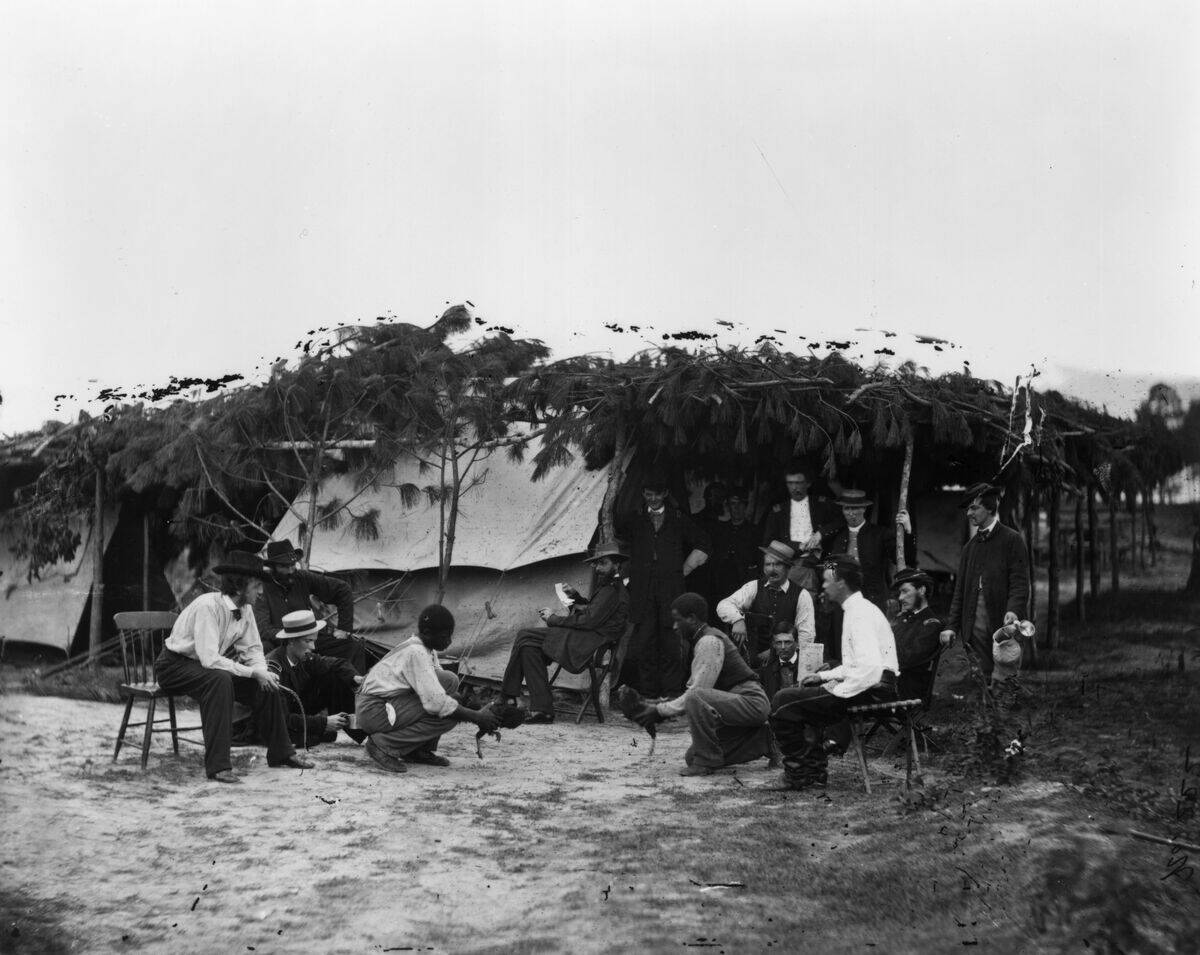
Soldiers took part in improvised sports during their downtime, including the nascent sport of baseball.
On a more grim note, cockfighting — a bloody sport where roosters were made to fight each other — also proved popular. This image shows soldiers keenly observing one such contest.
Not all battles were conclusive.
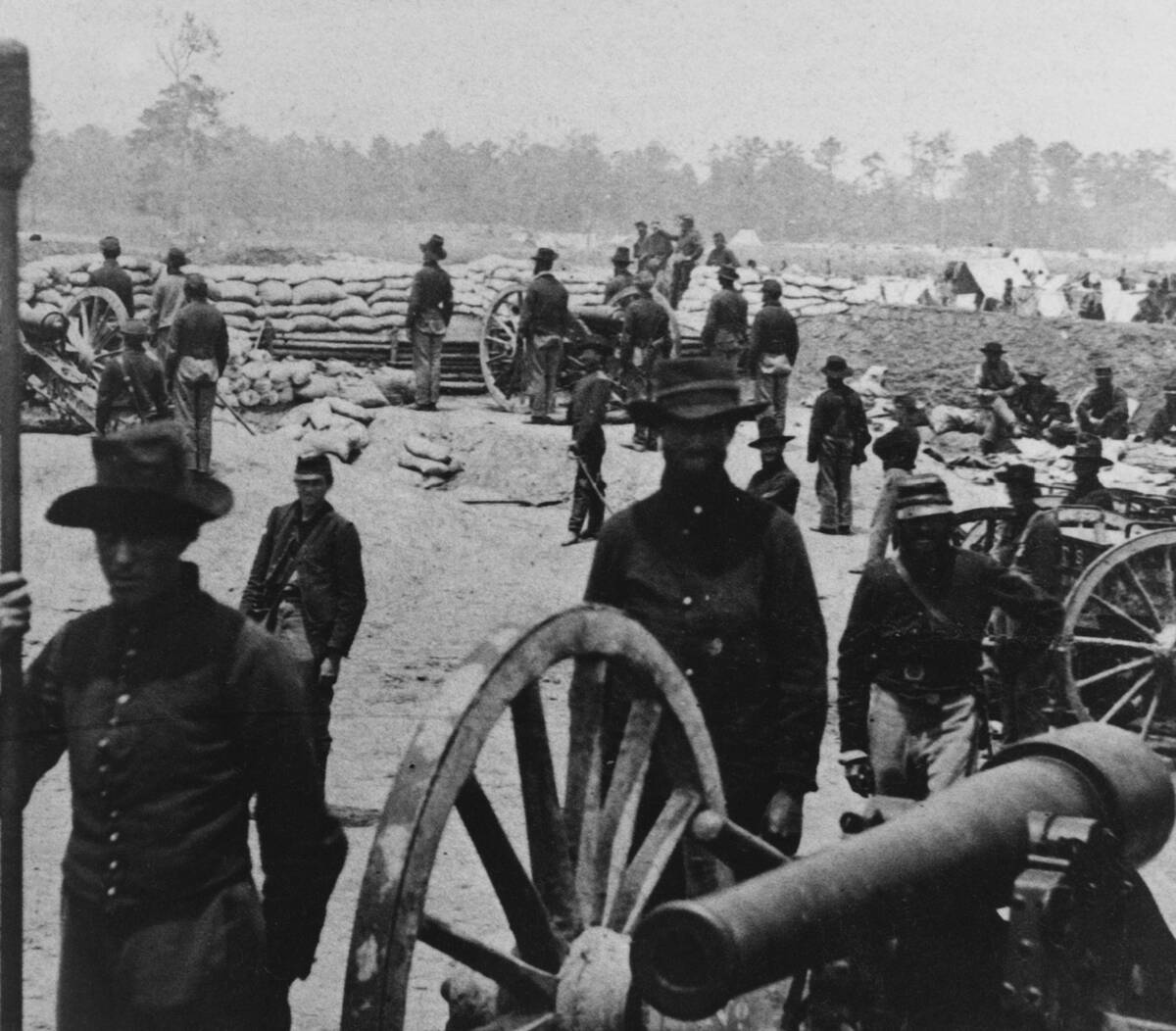
While the pivotal and decisive battles of the Civil War are well known to history buffs, the conflict also produced many battles with mixed or inconclusive results.
One such event was the Battle of Seven Pines near Richmond, Virginia. Both sides suffered heavy casualties, and the battle is best known for the ascendance of Confederate General Robert E. Lee, who was pressed into the role after his predecessor was wounded.
Strategy was discussed anywhere and everywhere.

There was a degree of secrecy when it came to high-level planning, but in general, top officials would work on their battle plans anywhere they could find.
This image shows Ulysses S. Grant leaning over two seated men to study a map. They’re seated just outside of a church, and have pulled pews out of the building to sit on.
Manassas was a critical point.
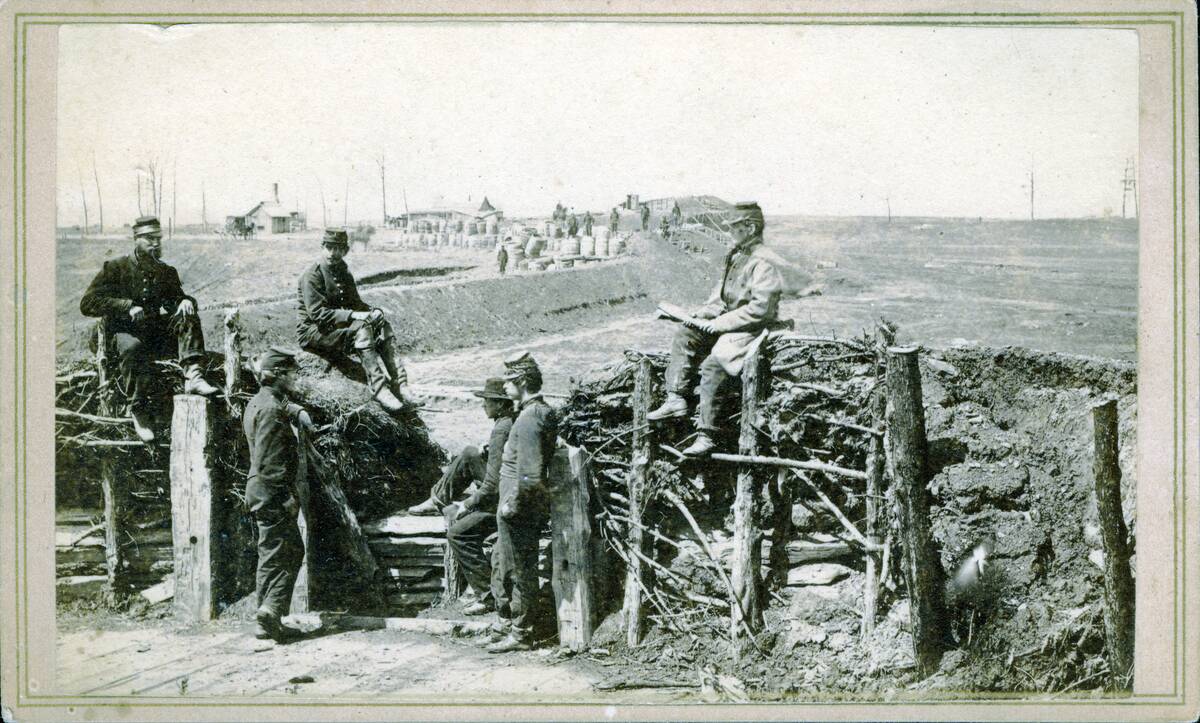
The fortifications at Manassas, Virginia were first constructed by Confederate troops after the Confederacy won the First Battle of Bull Run in 1861.
These fortifications helped to protect key locations while also establishing strong defensive positions that proved crucial in the Second Battle of Bull Run the following year.
Mail was a vital lifeline.

Even amidst the chaos of the Civil War, mail delivery still took place in both the South and the North — despite some challenges.
After the Union imposed blockades on the South, mail delivery became more difficult for the Confederacy. The personal letters sent and delivered during the war served as a historical record of wartime experiences.



